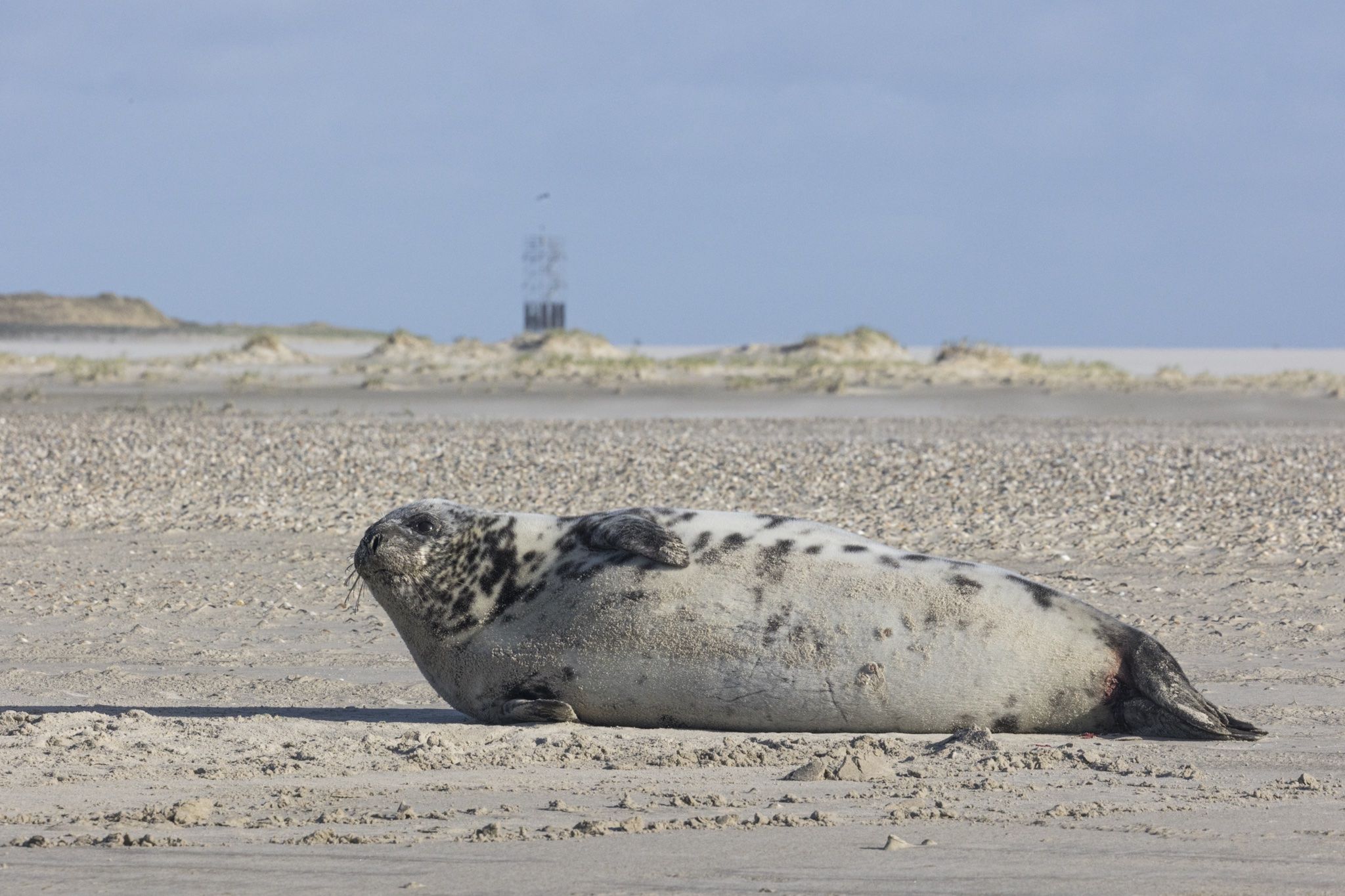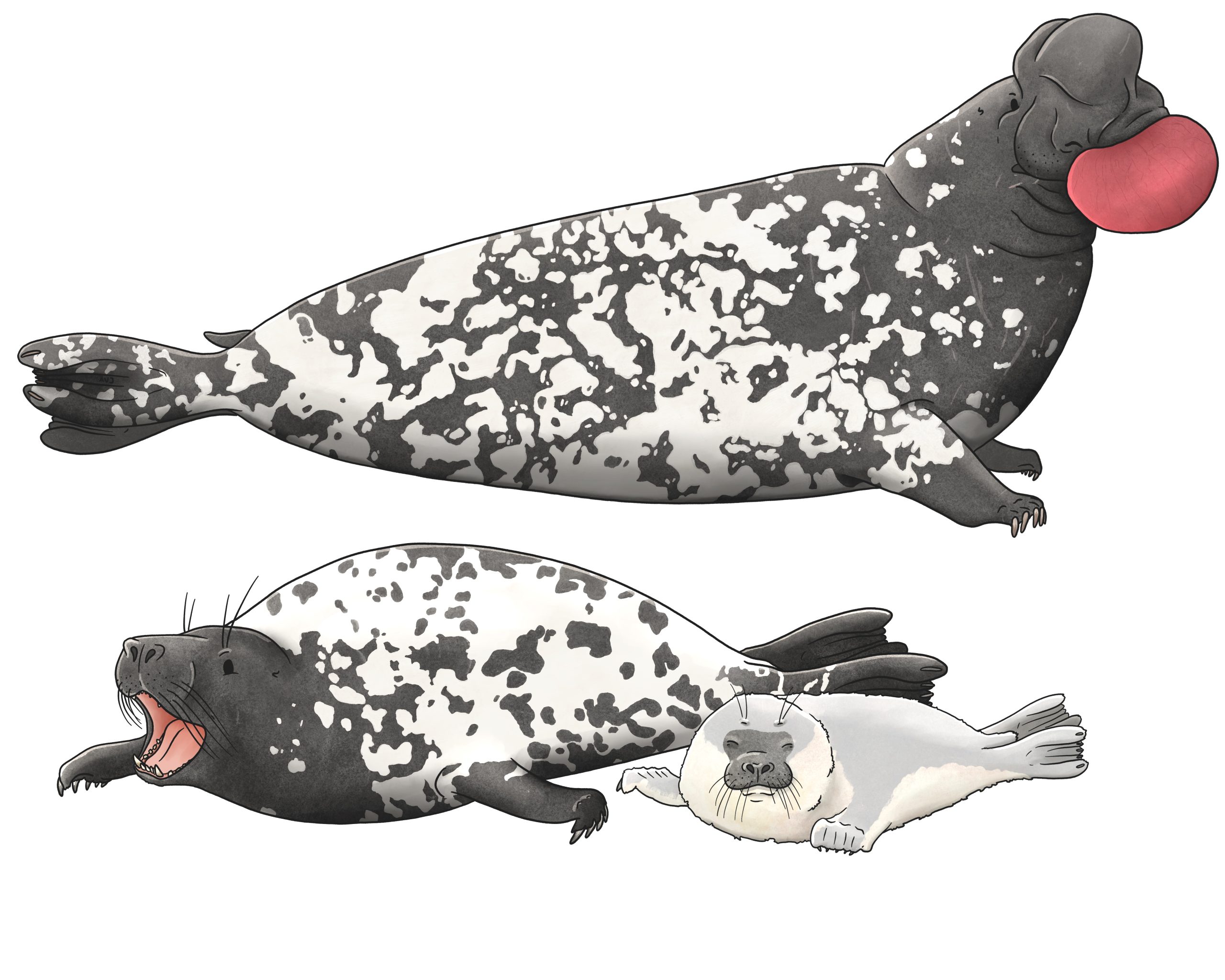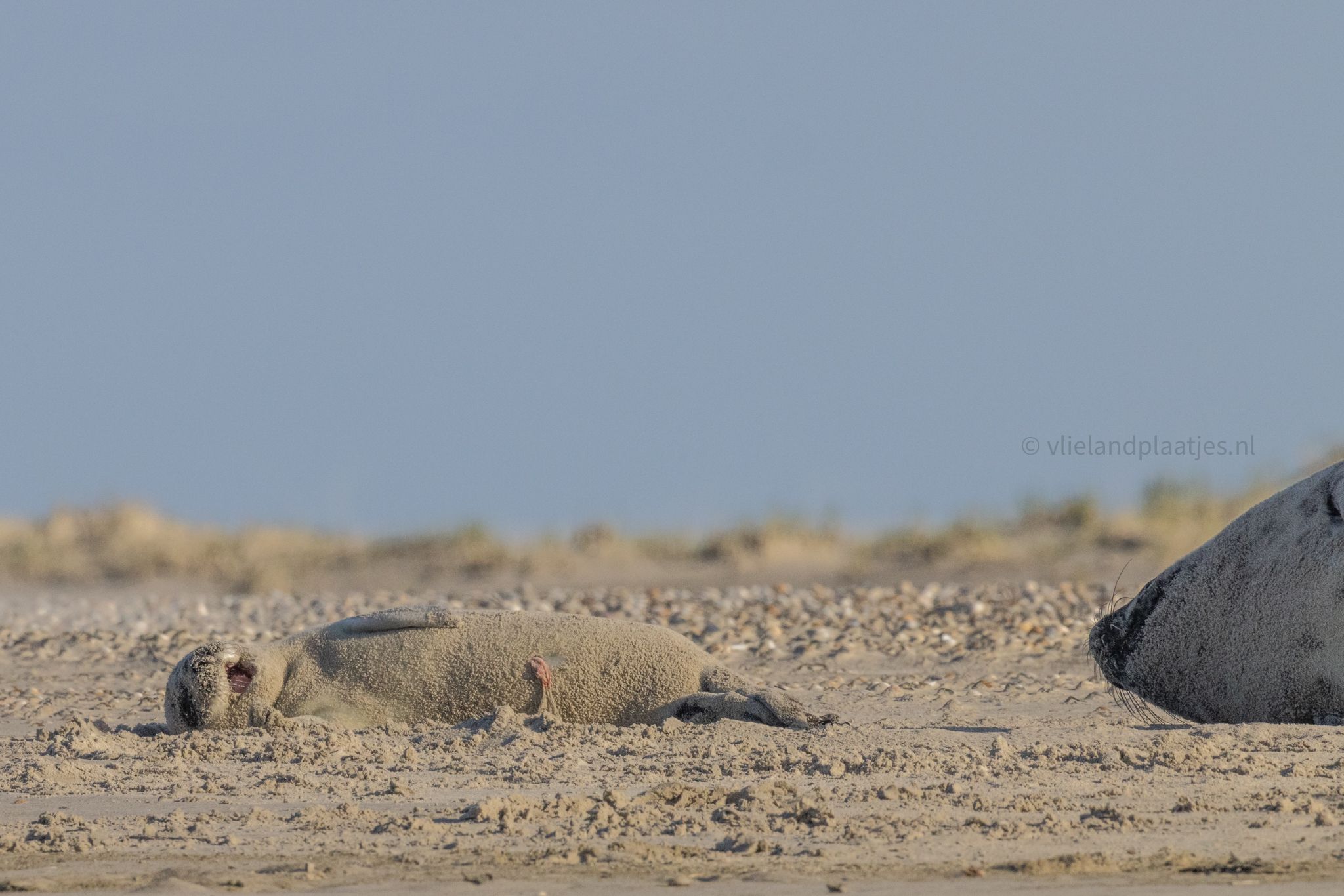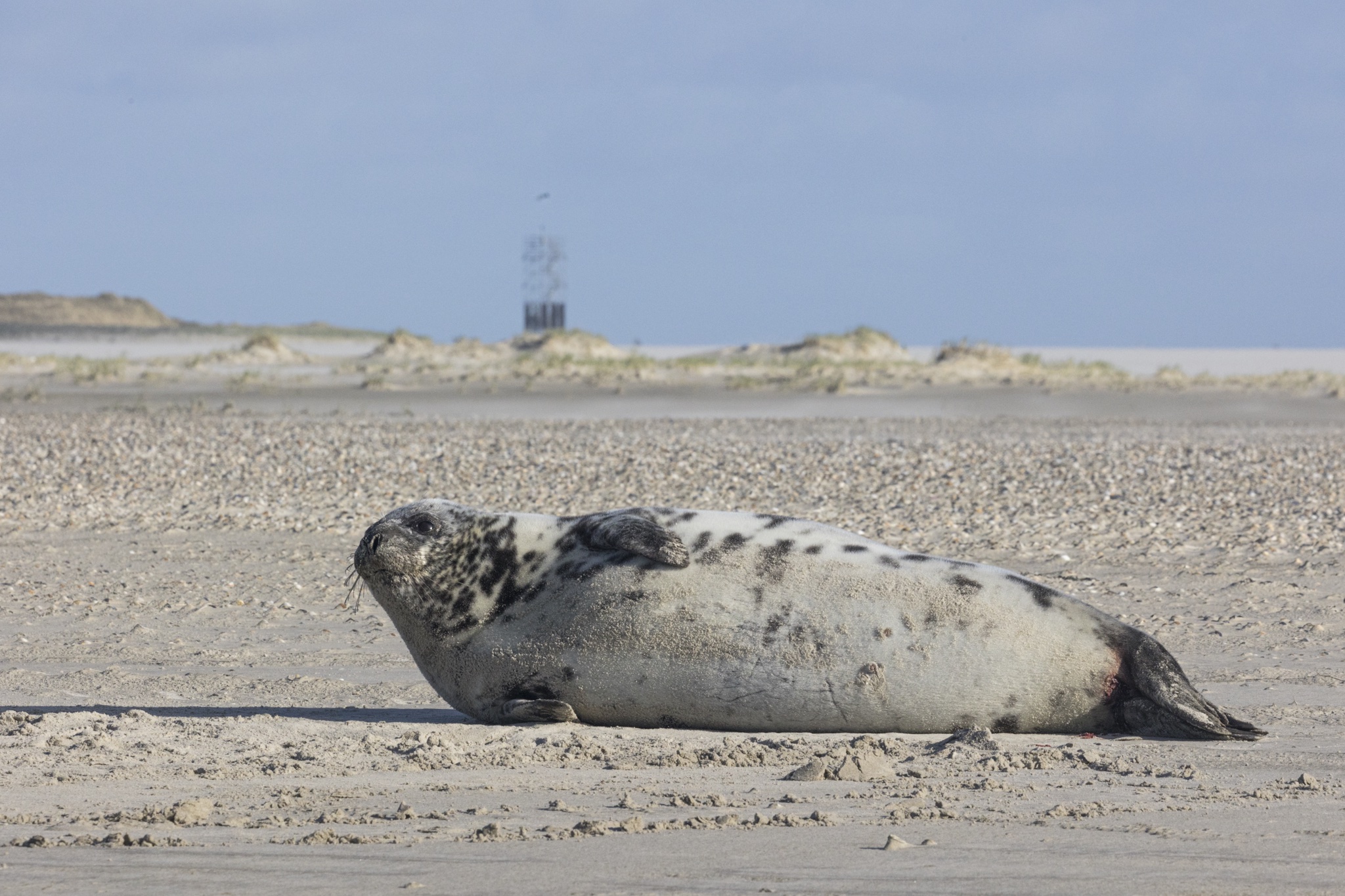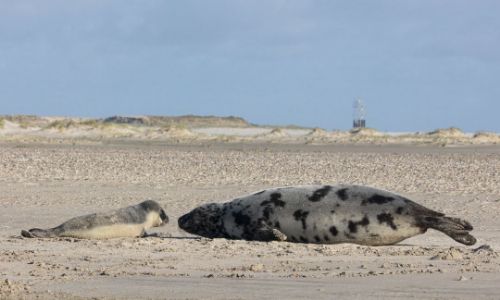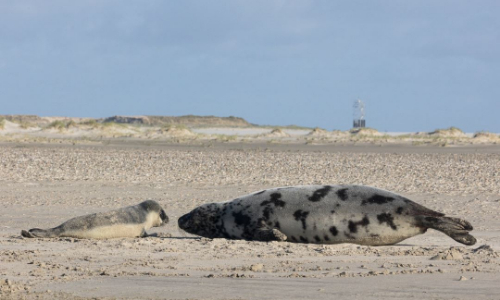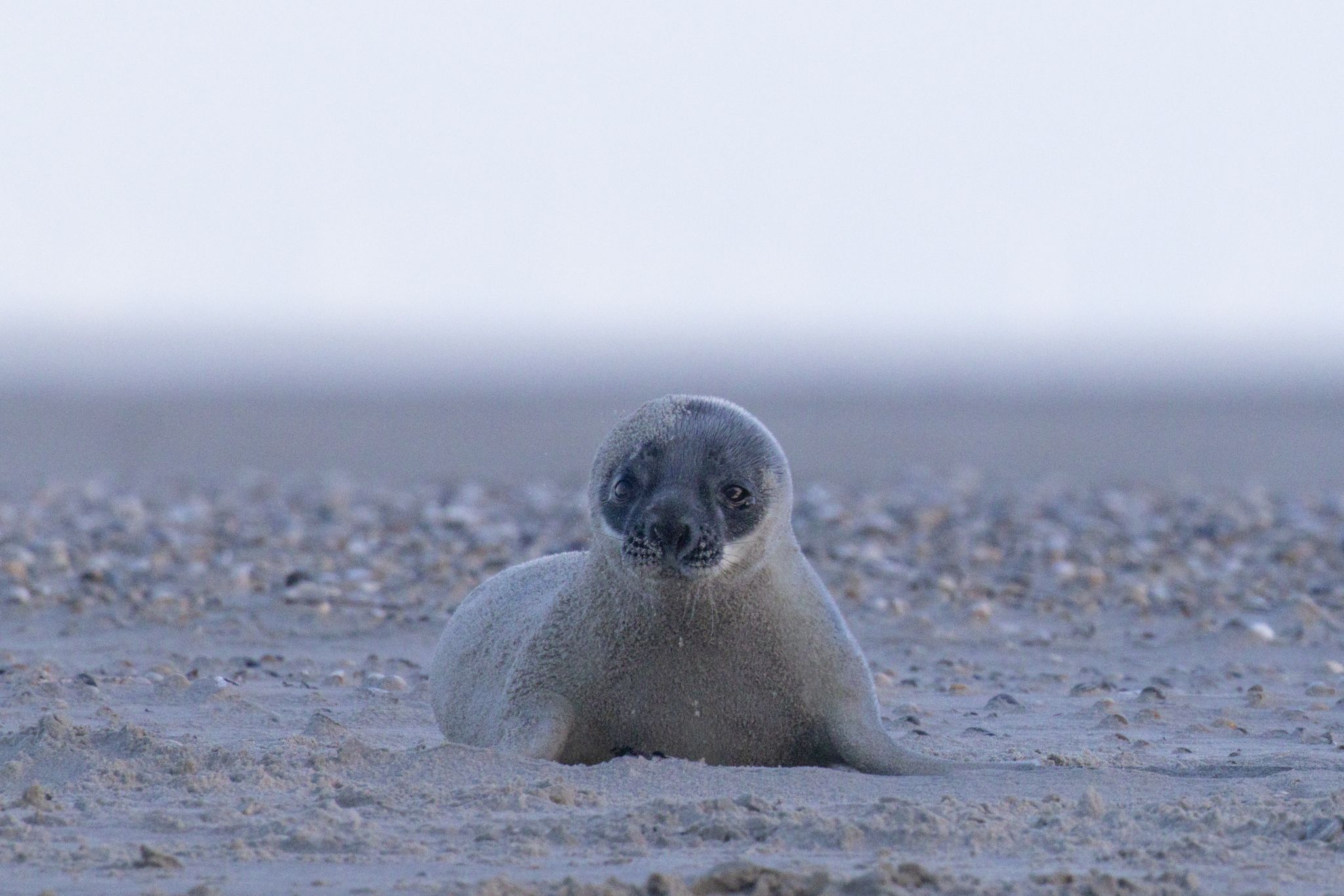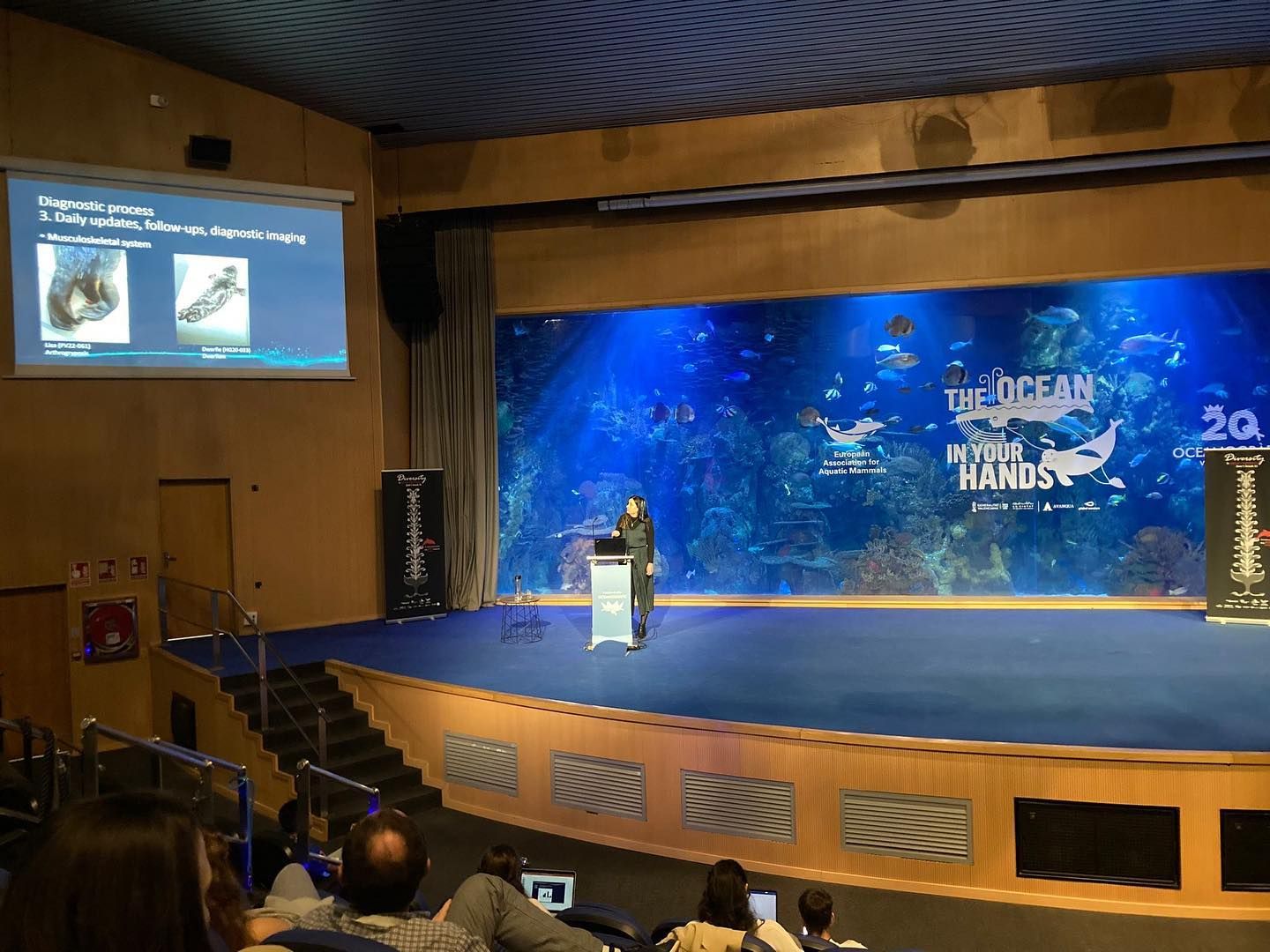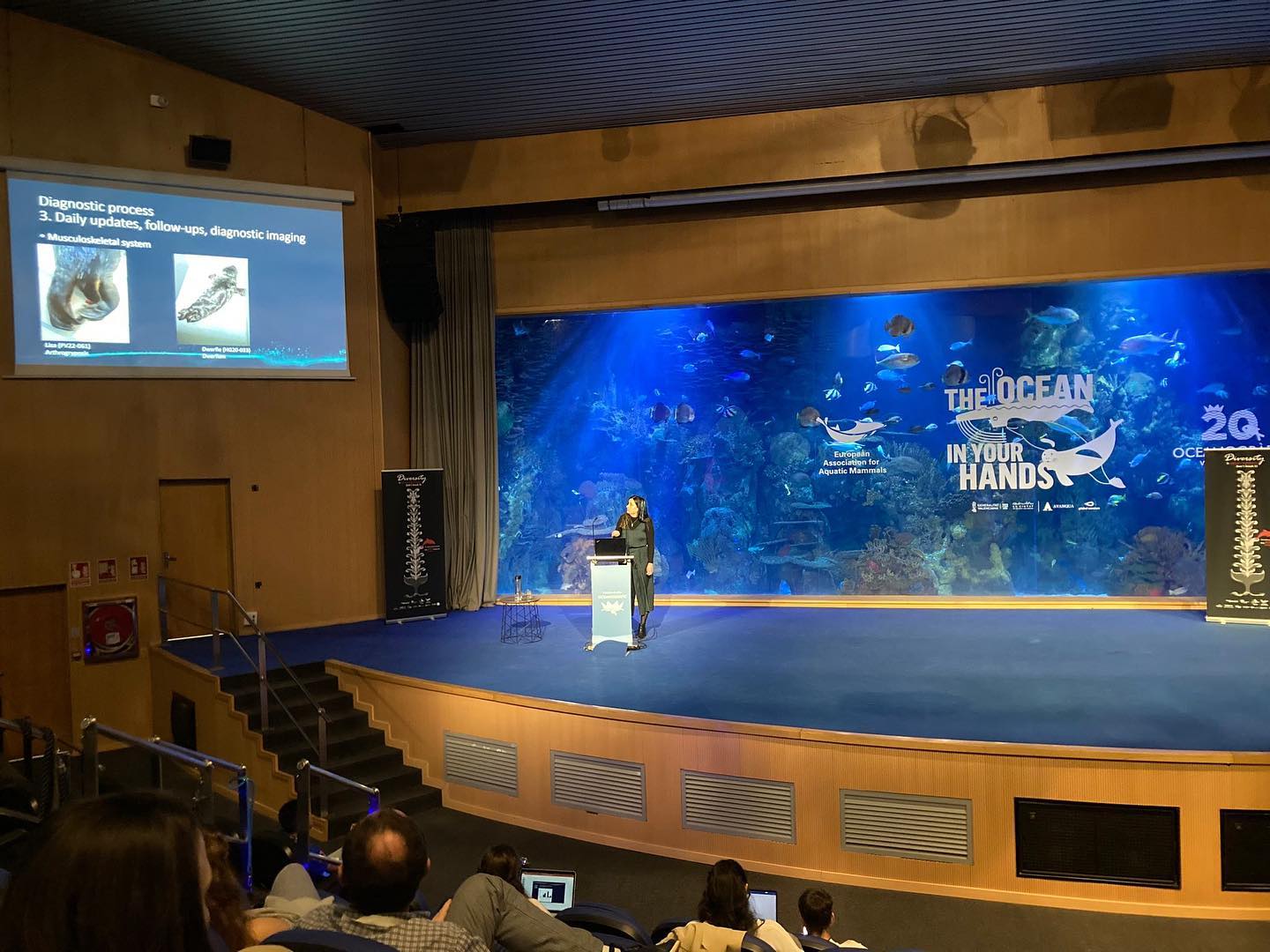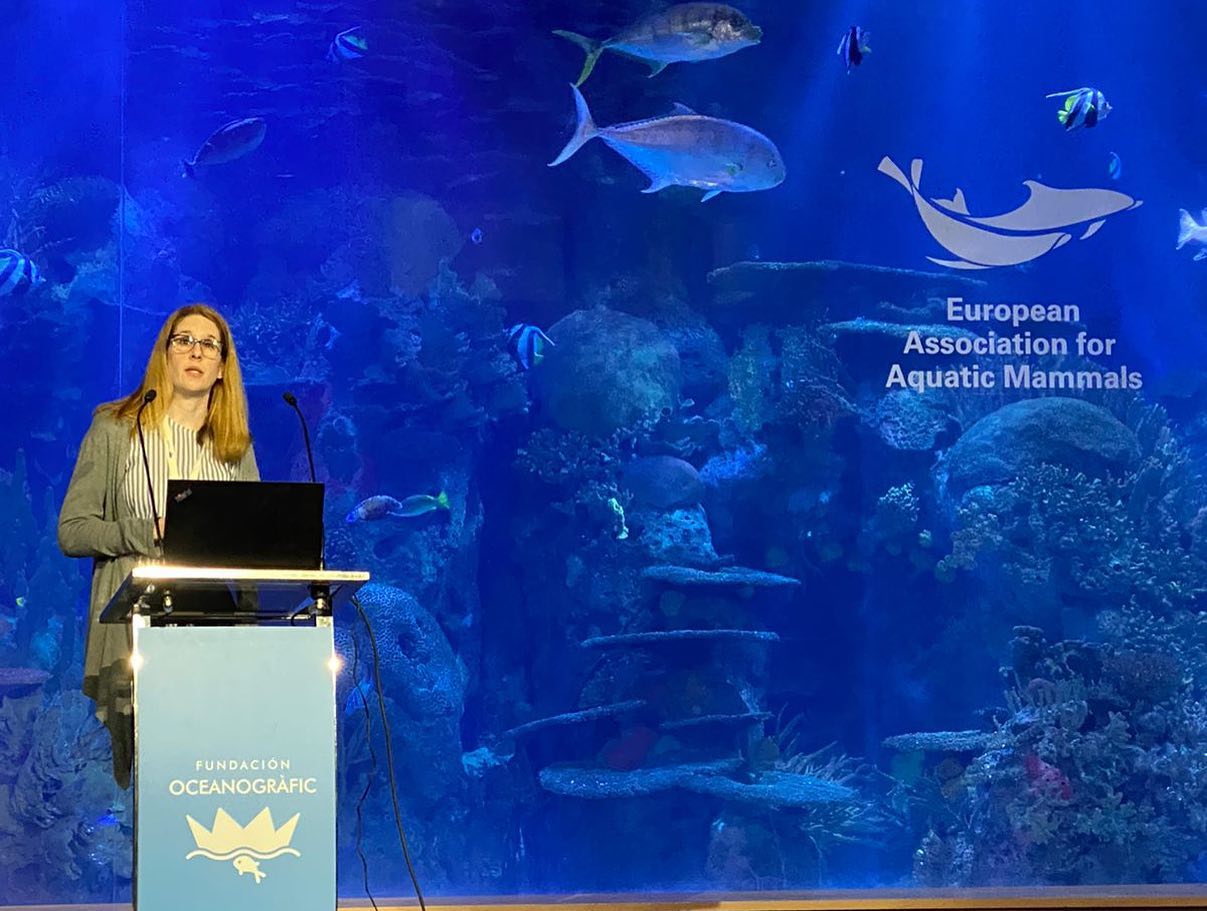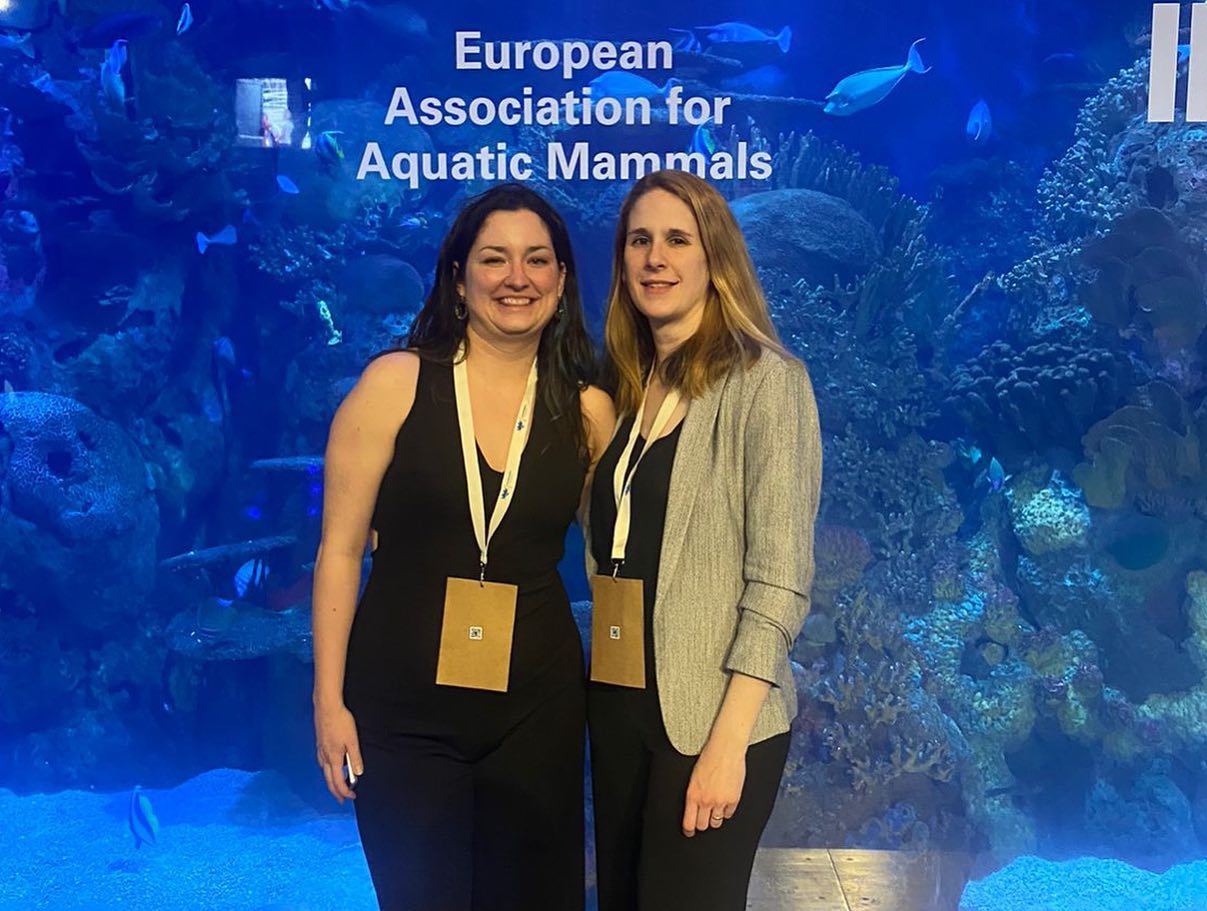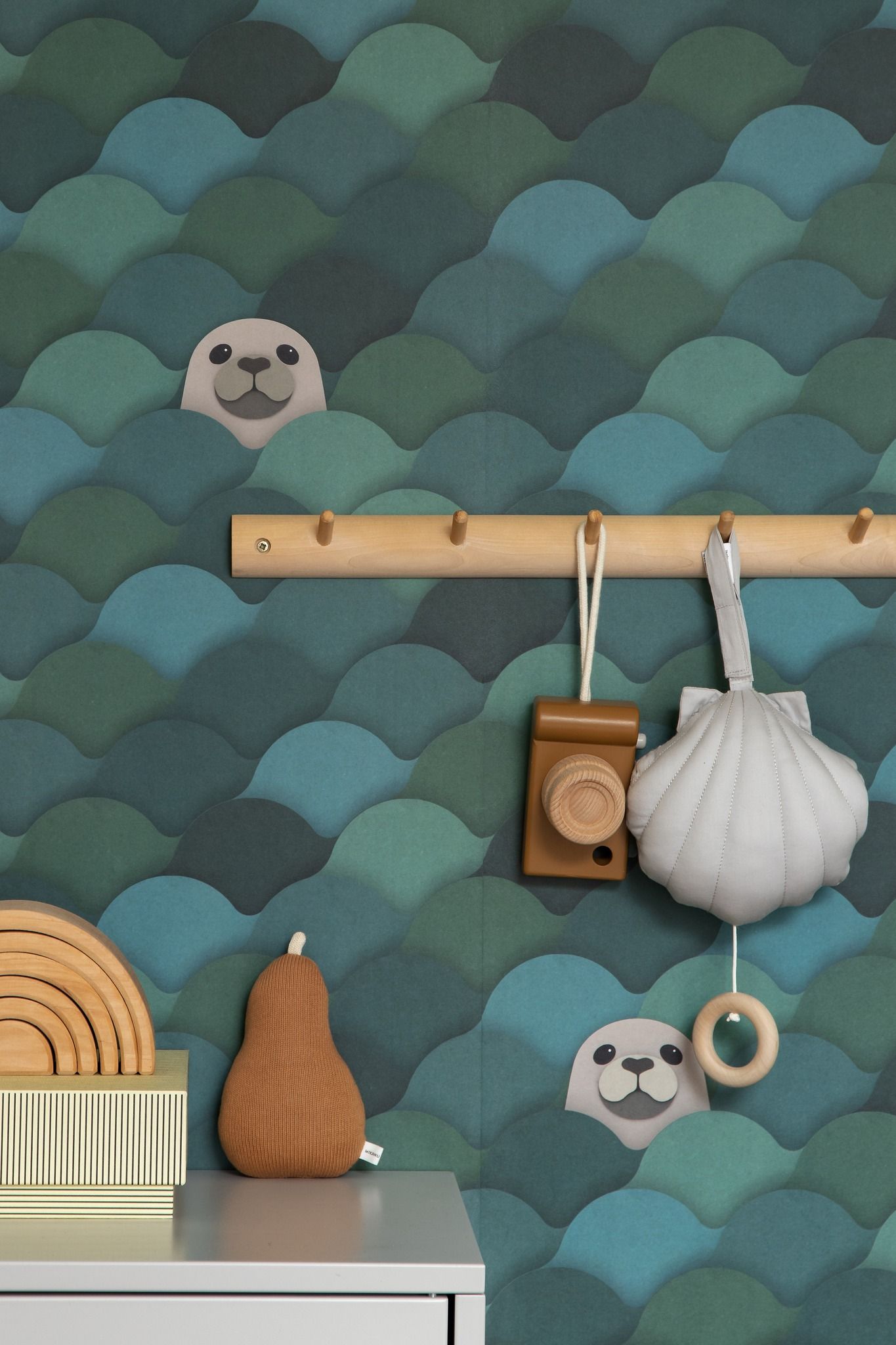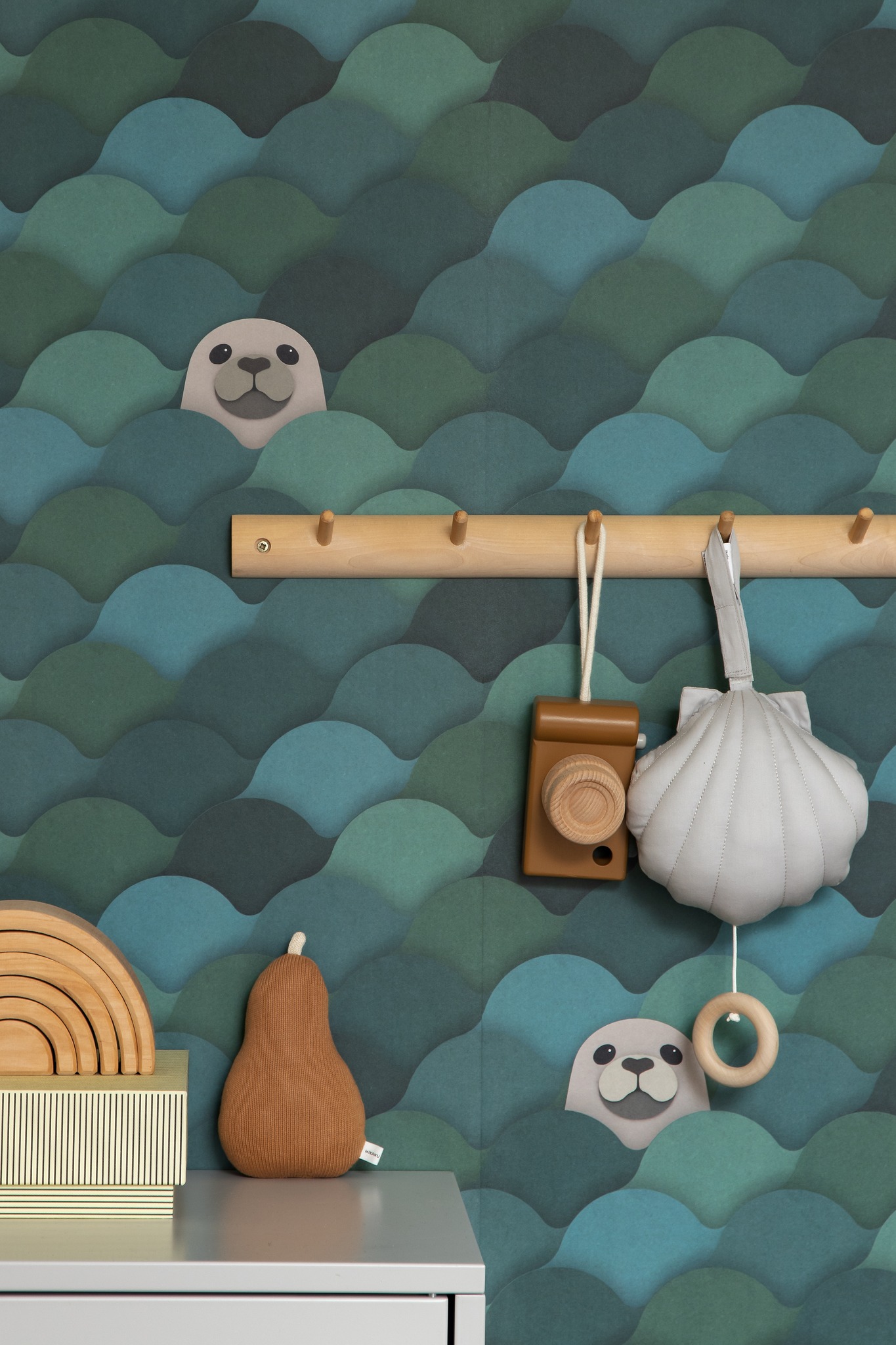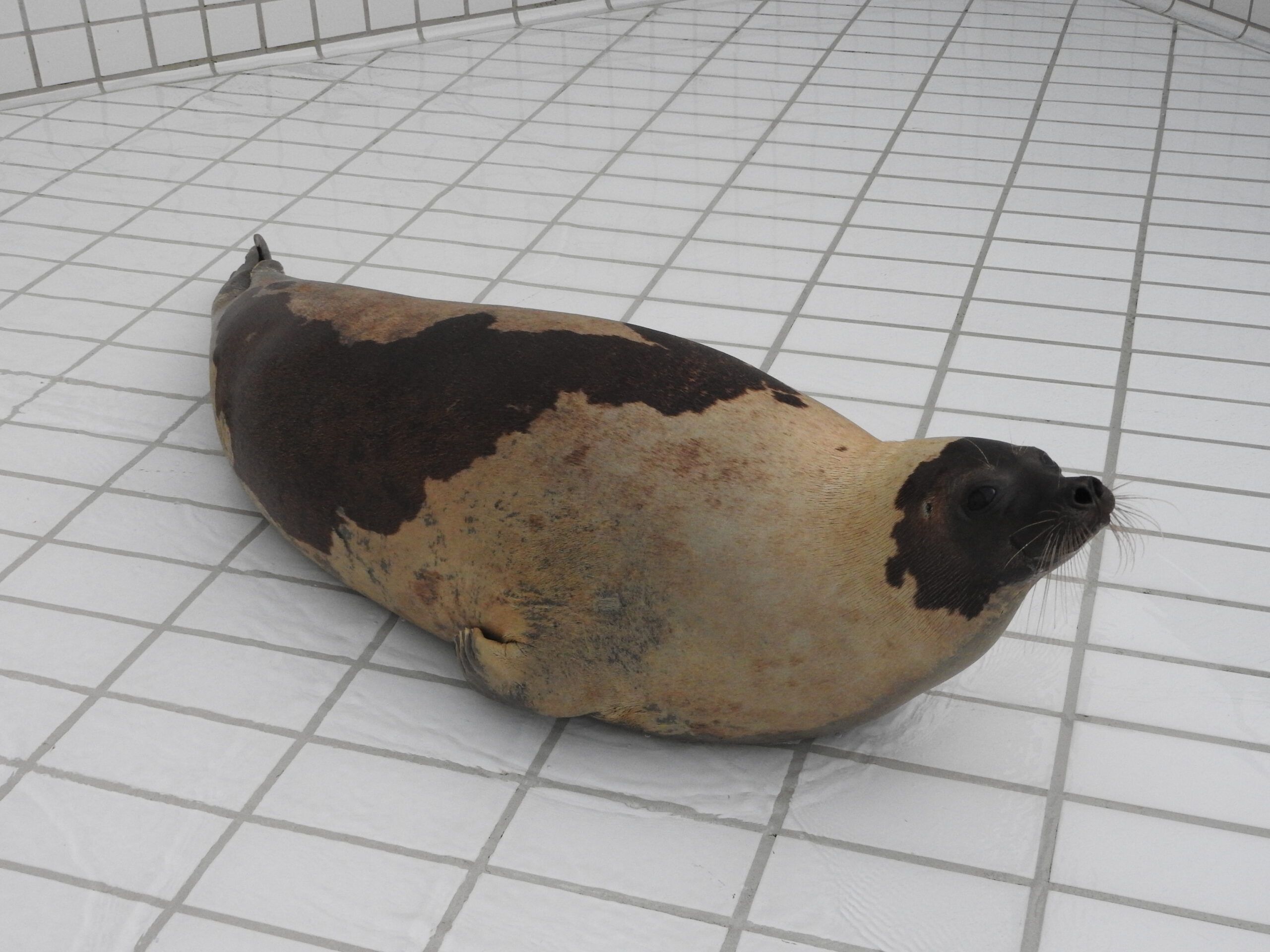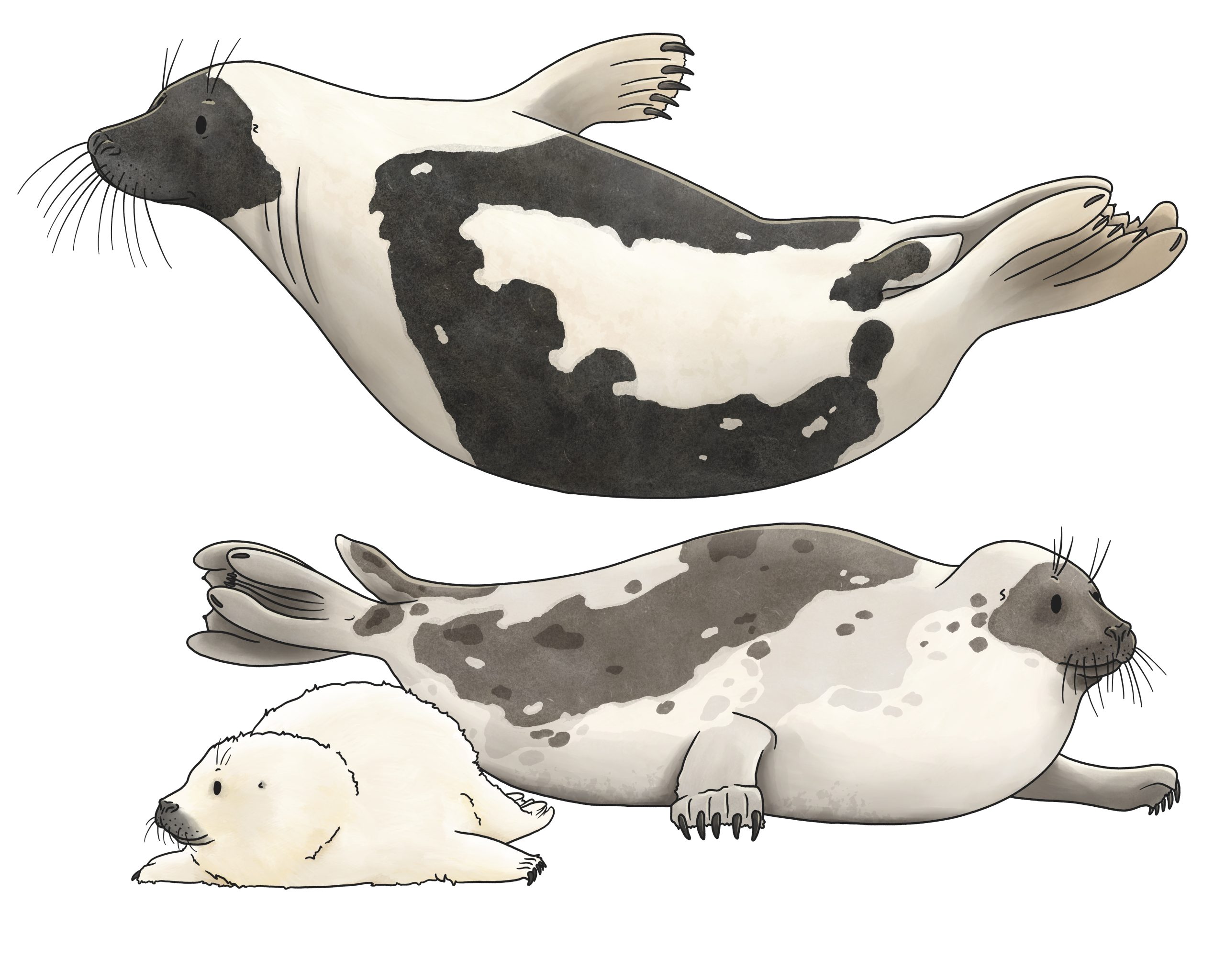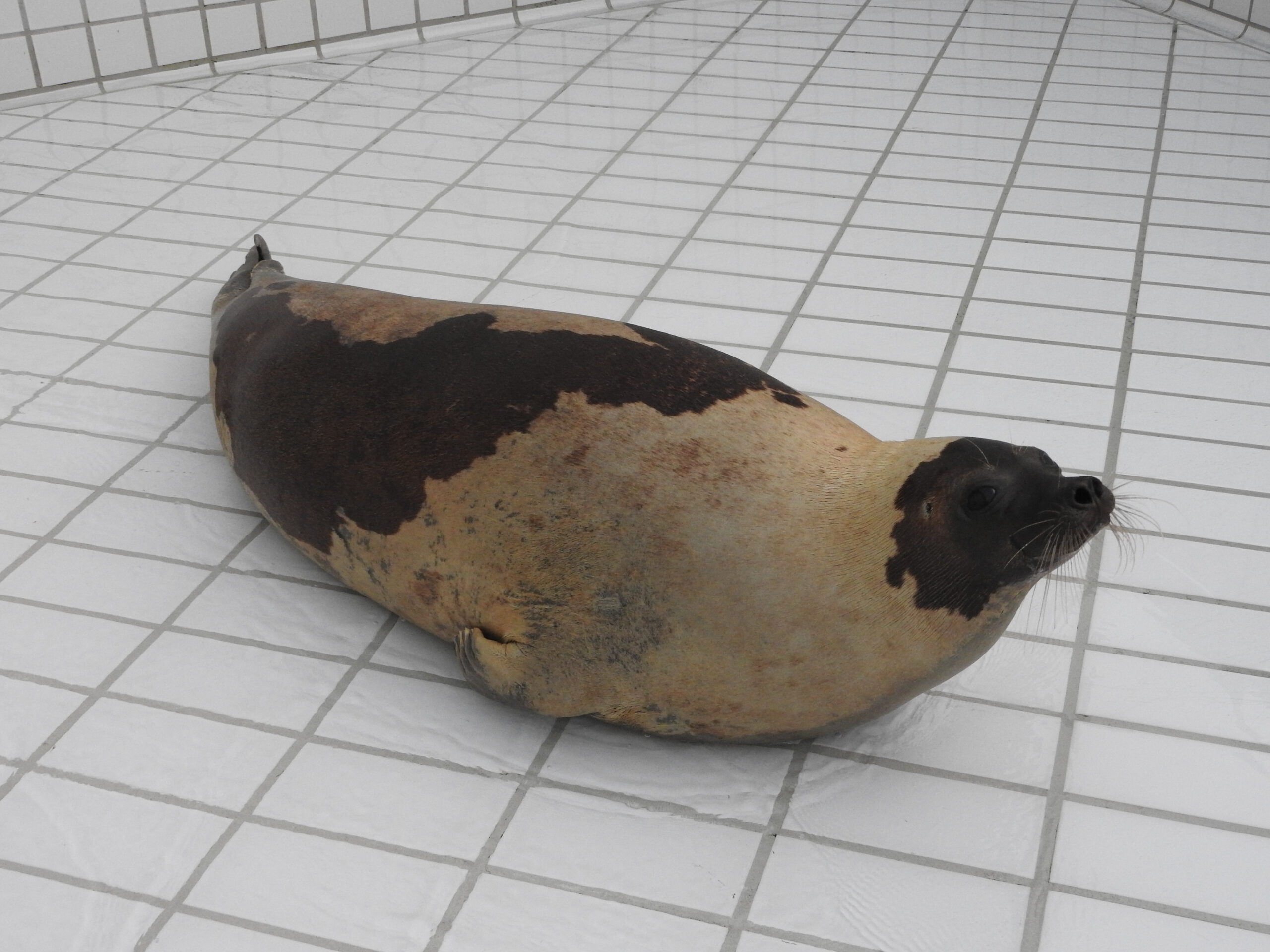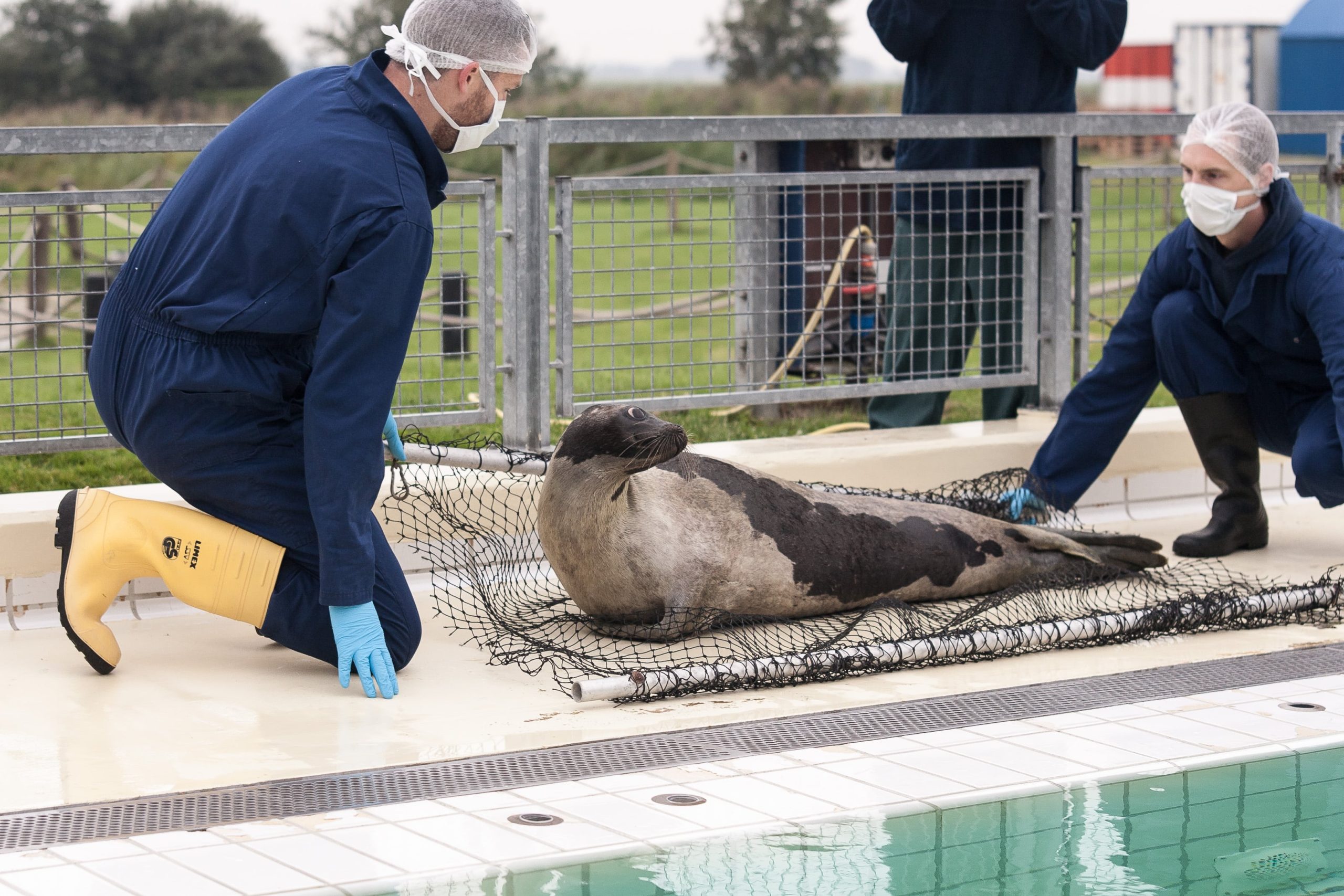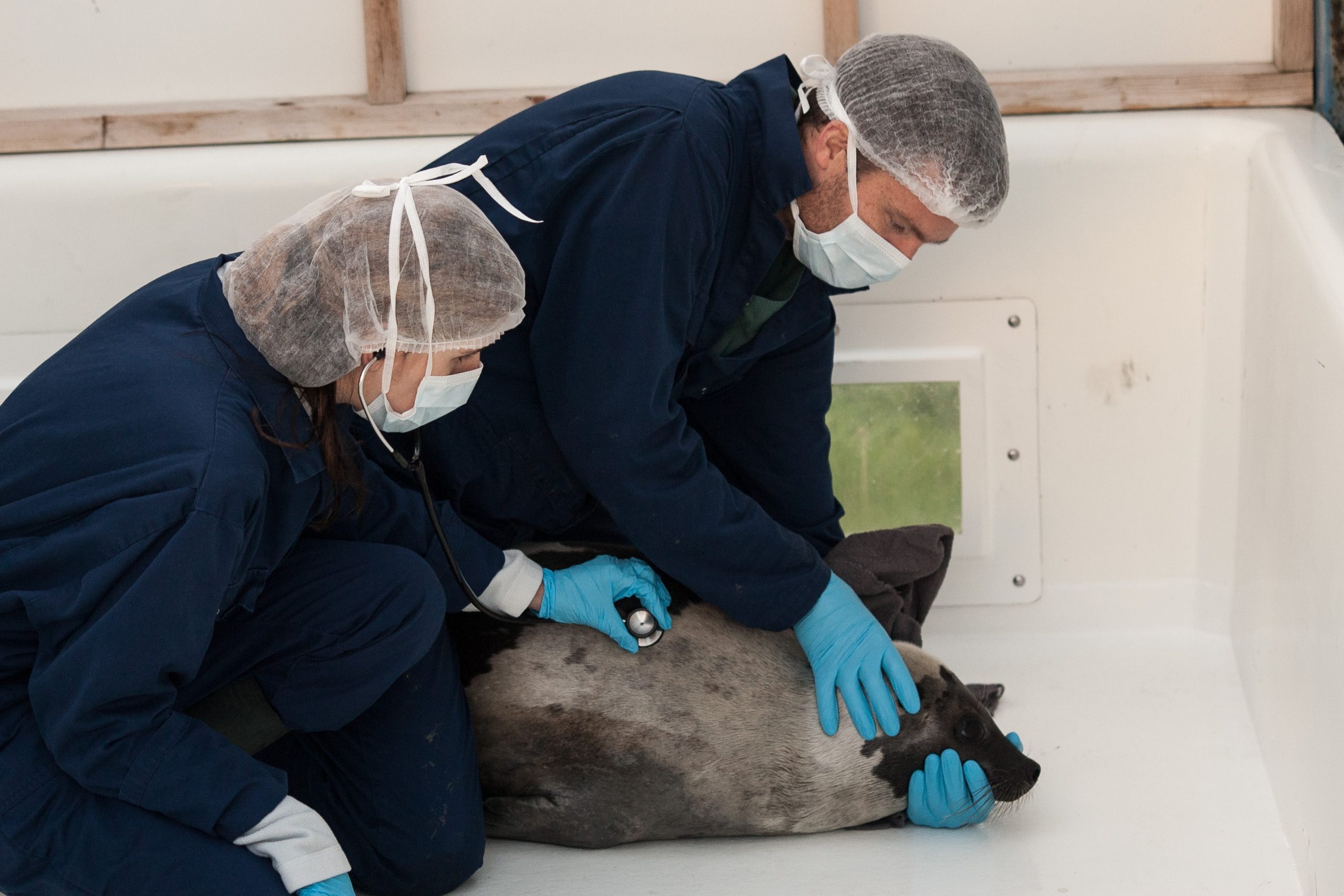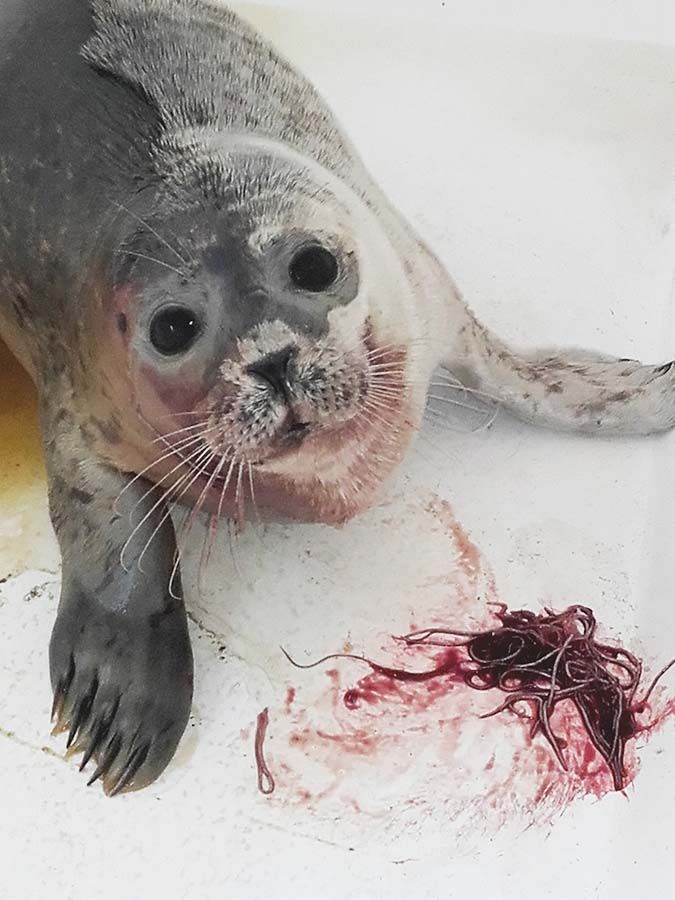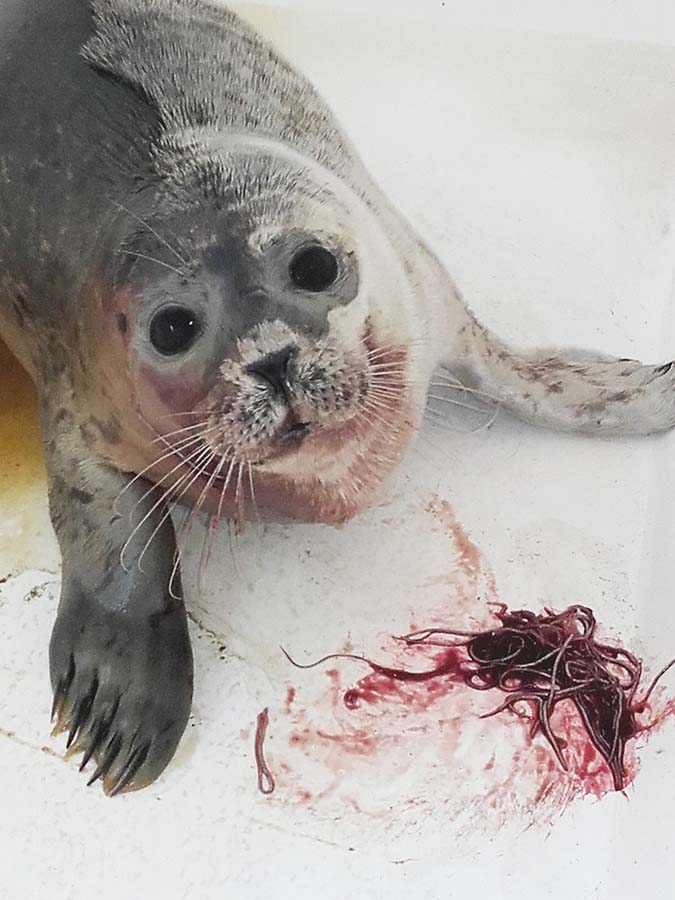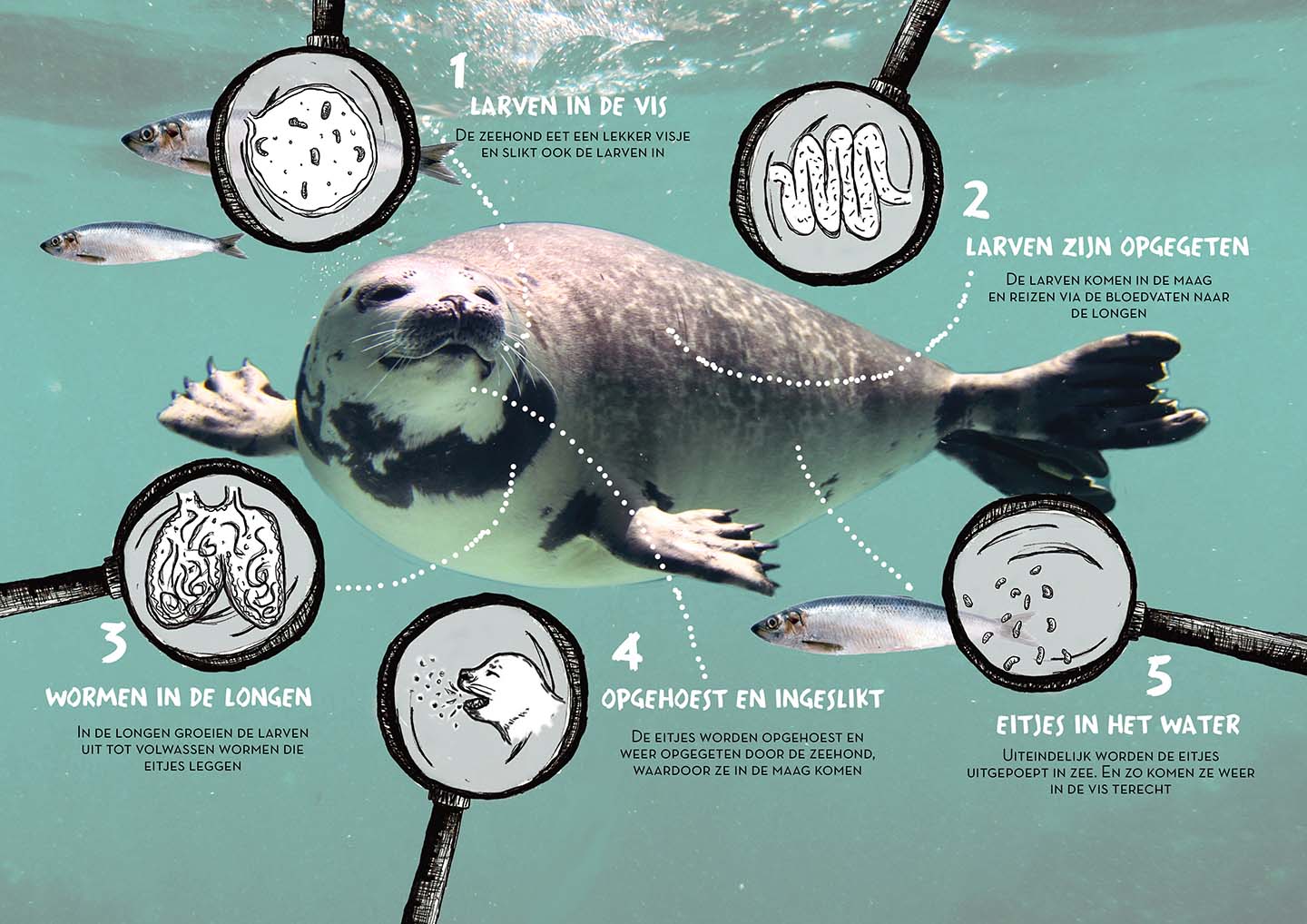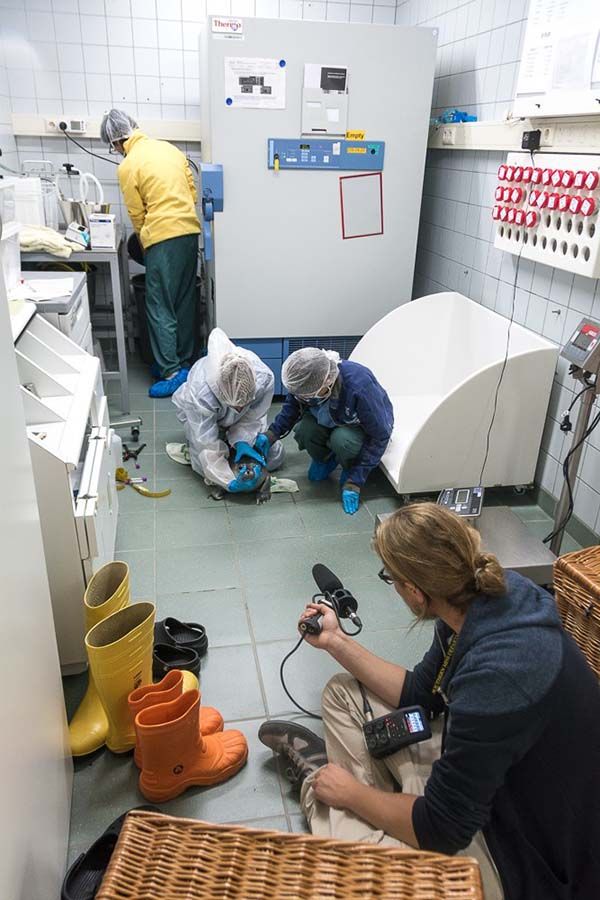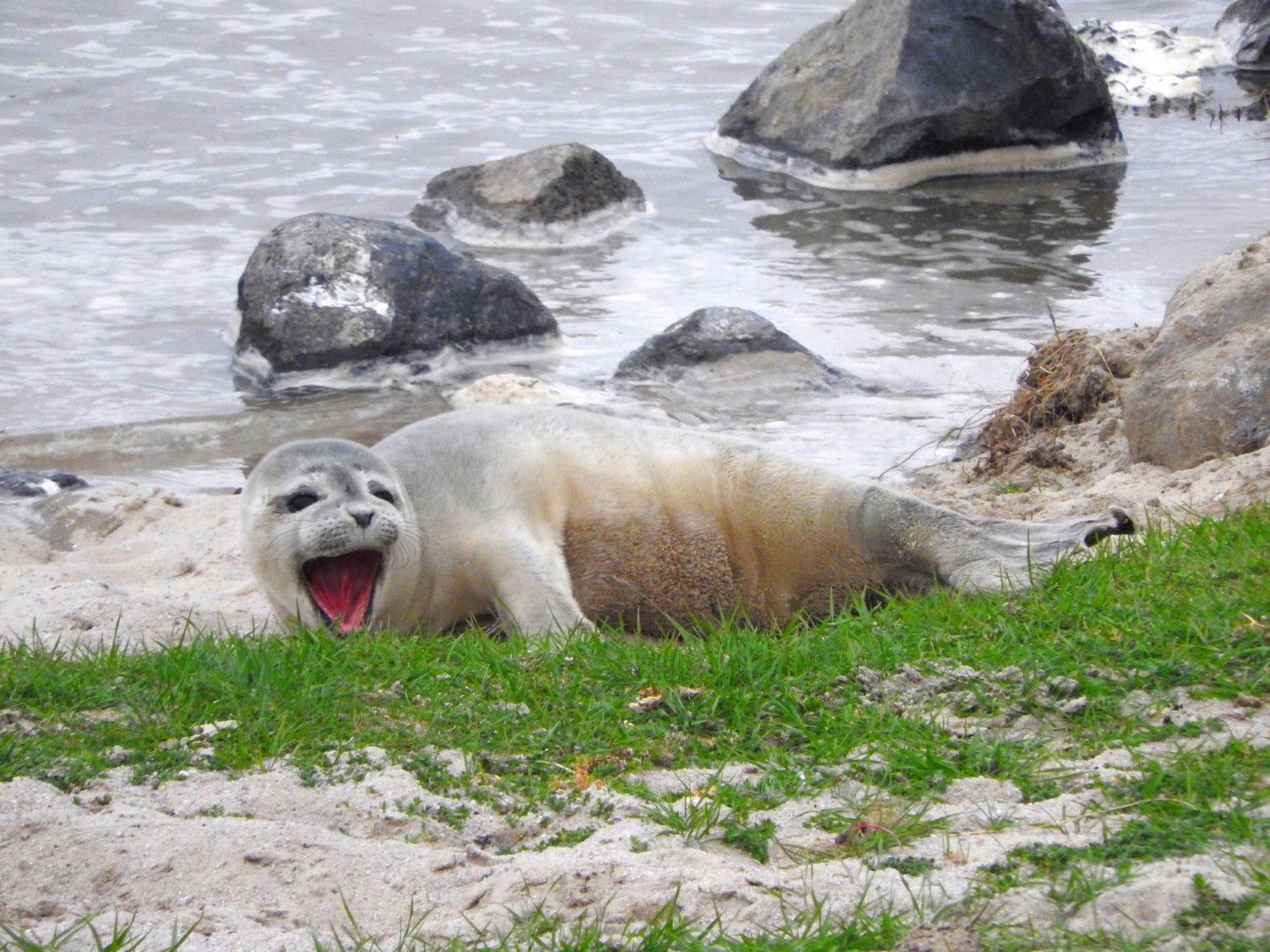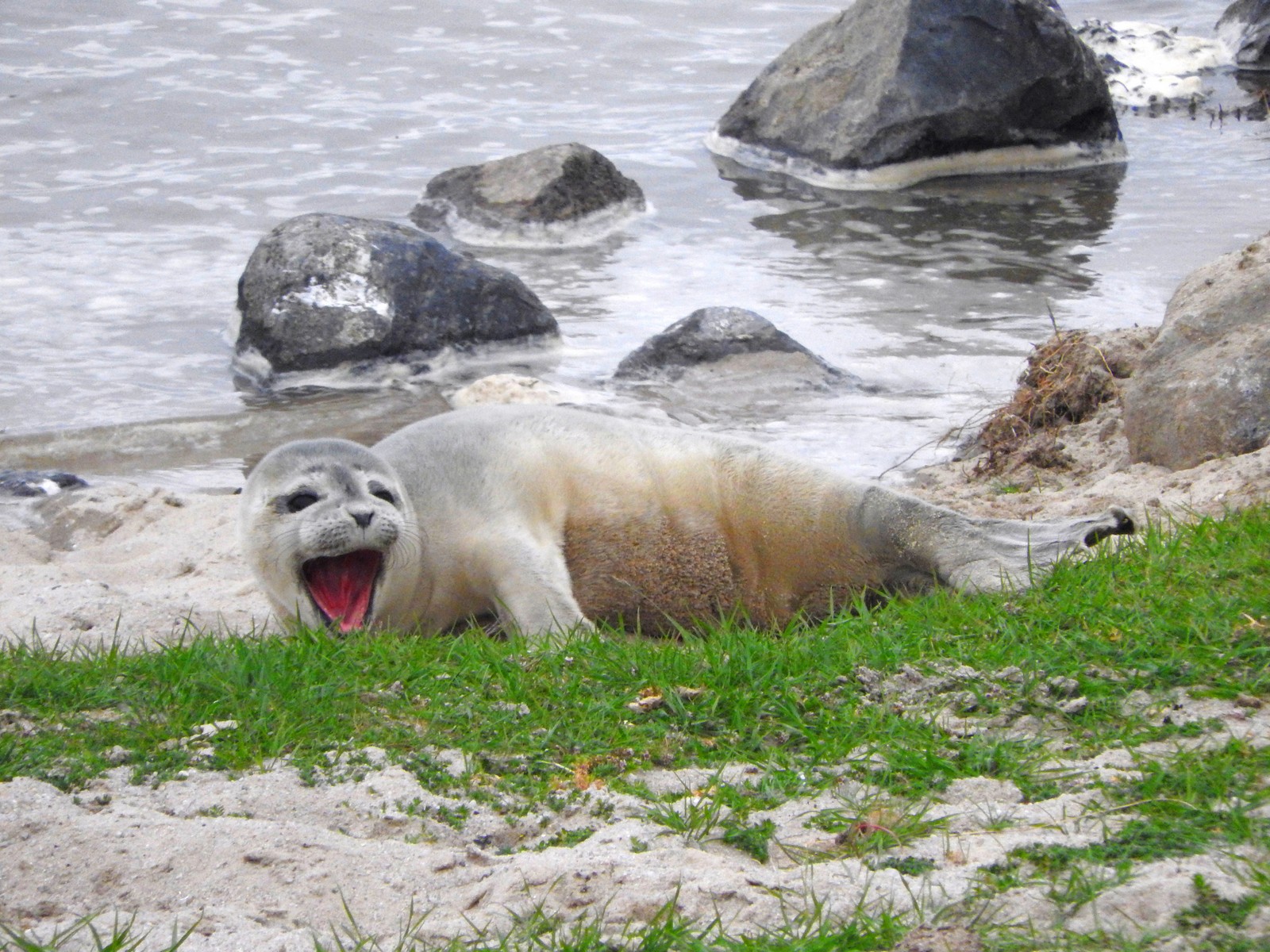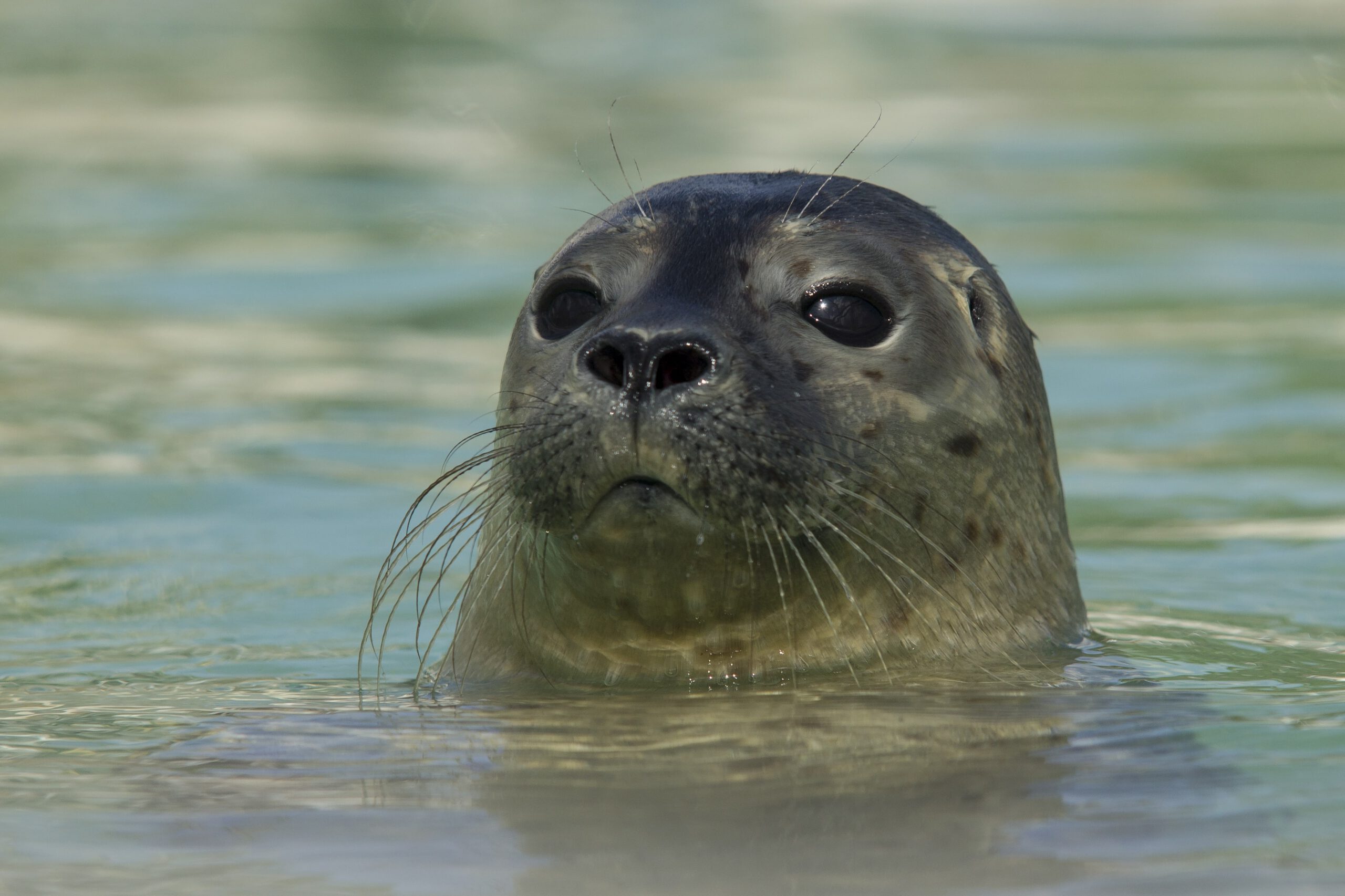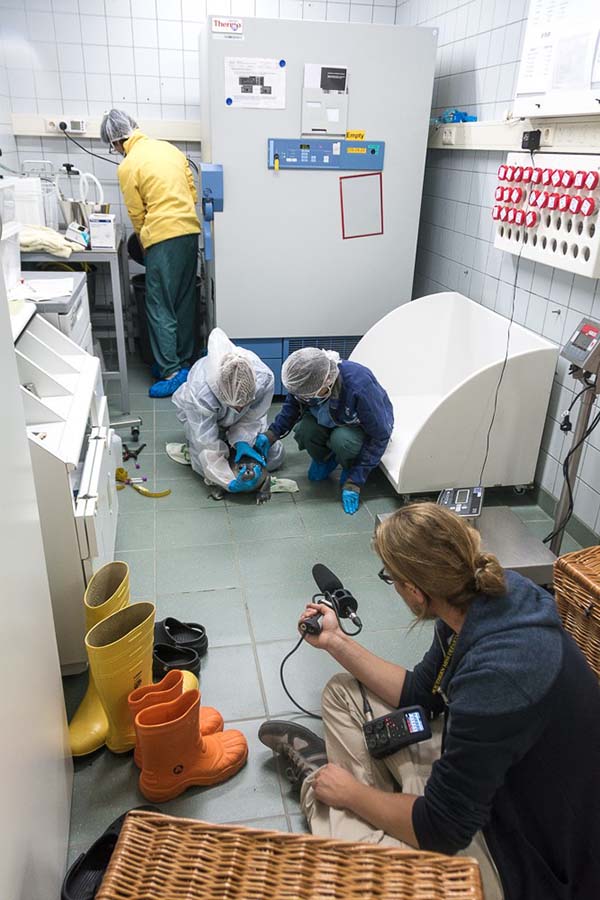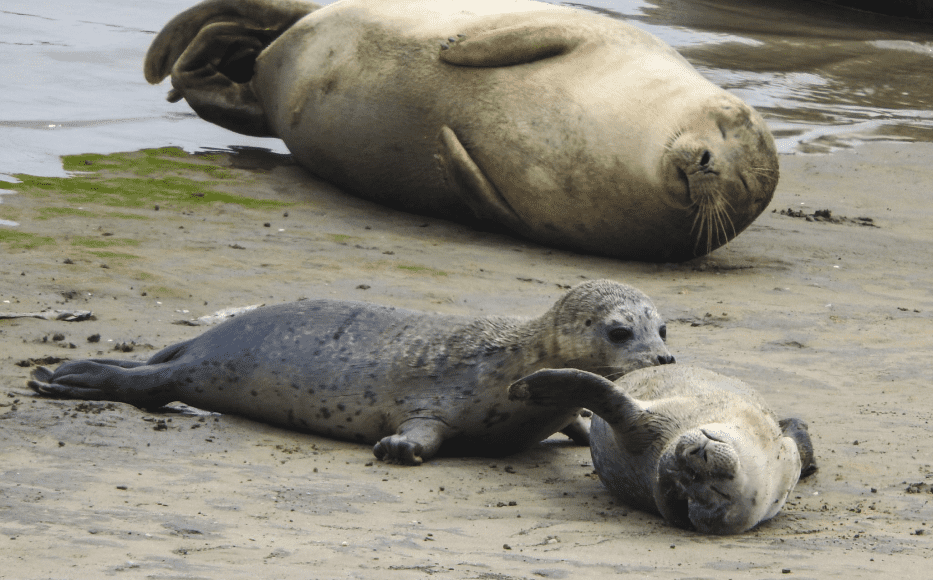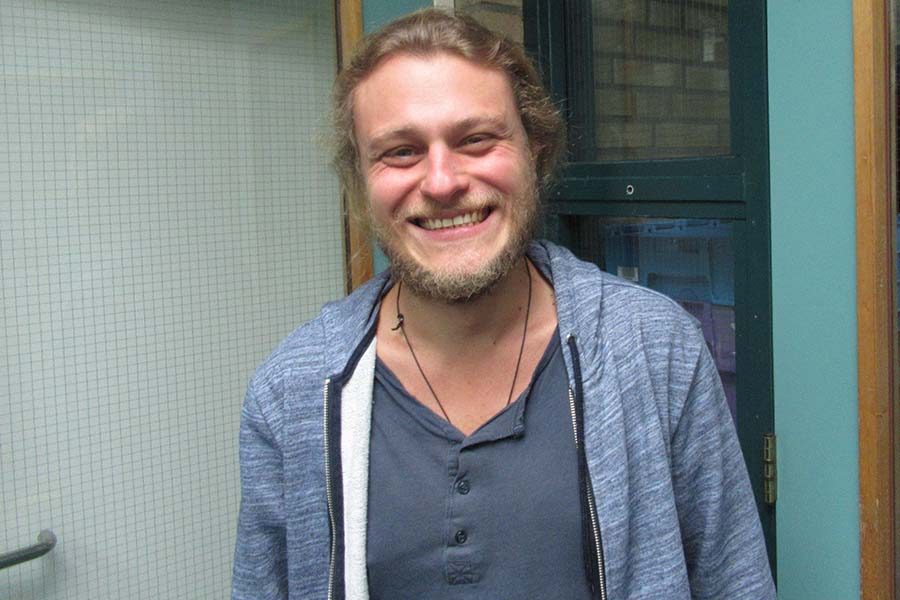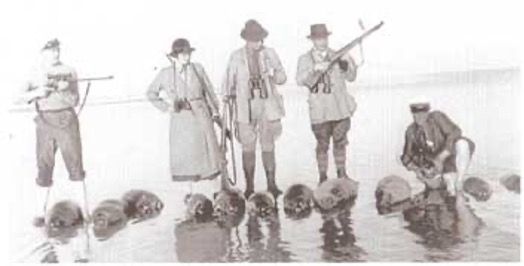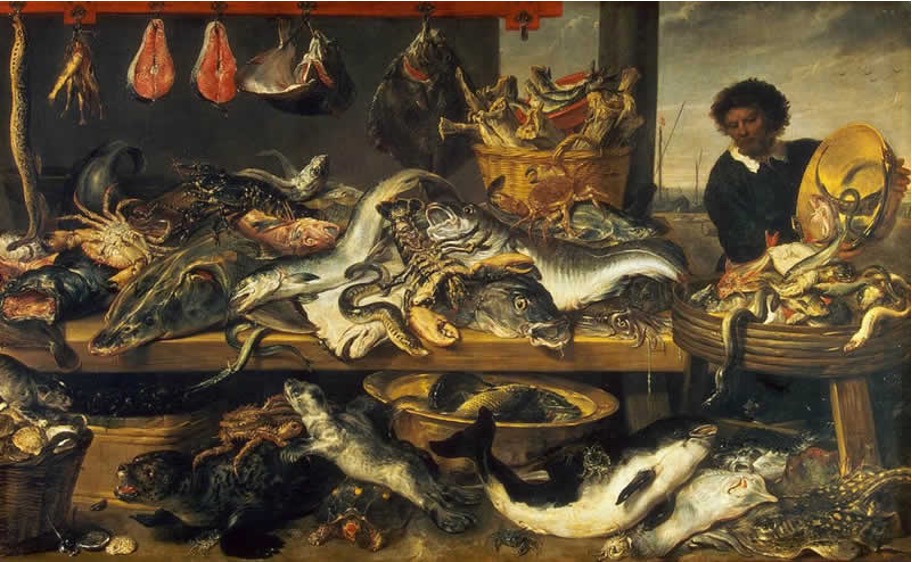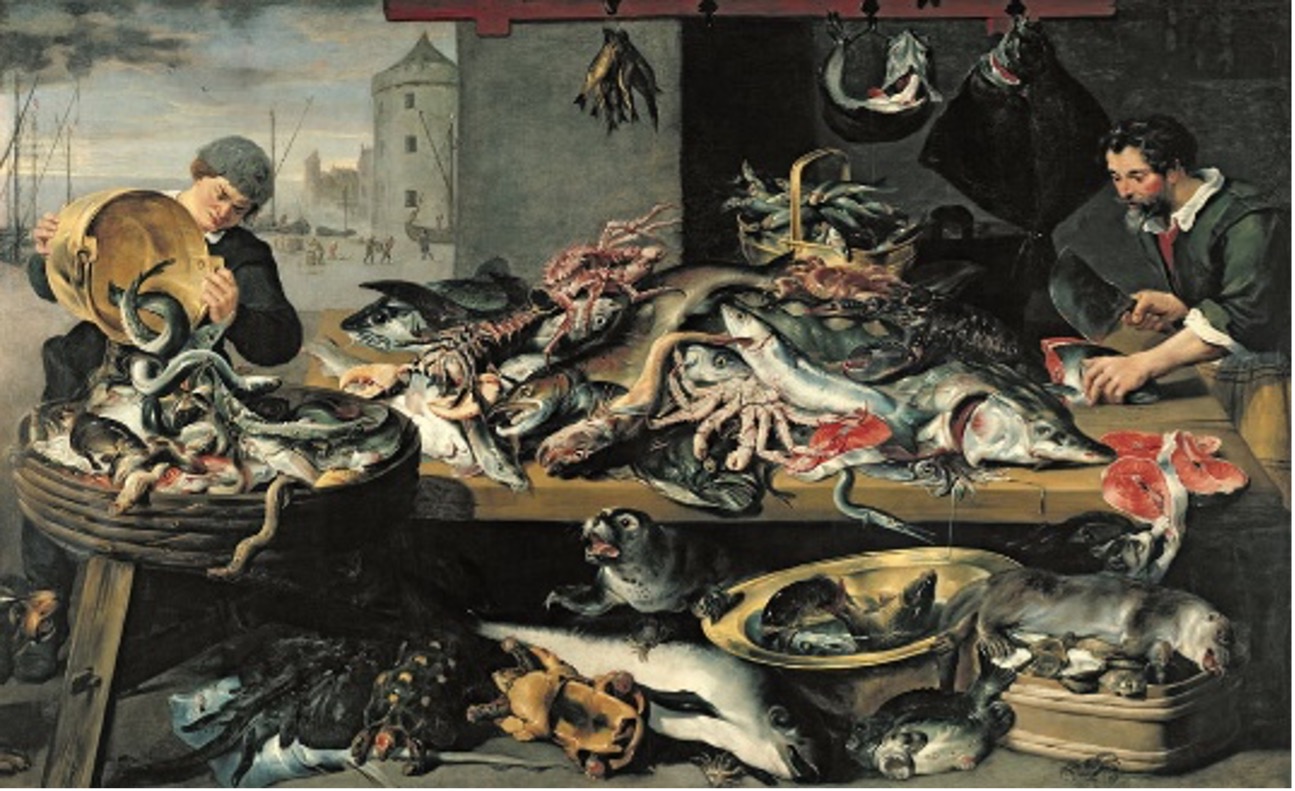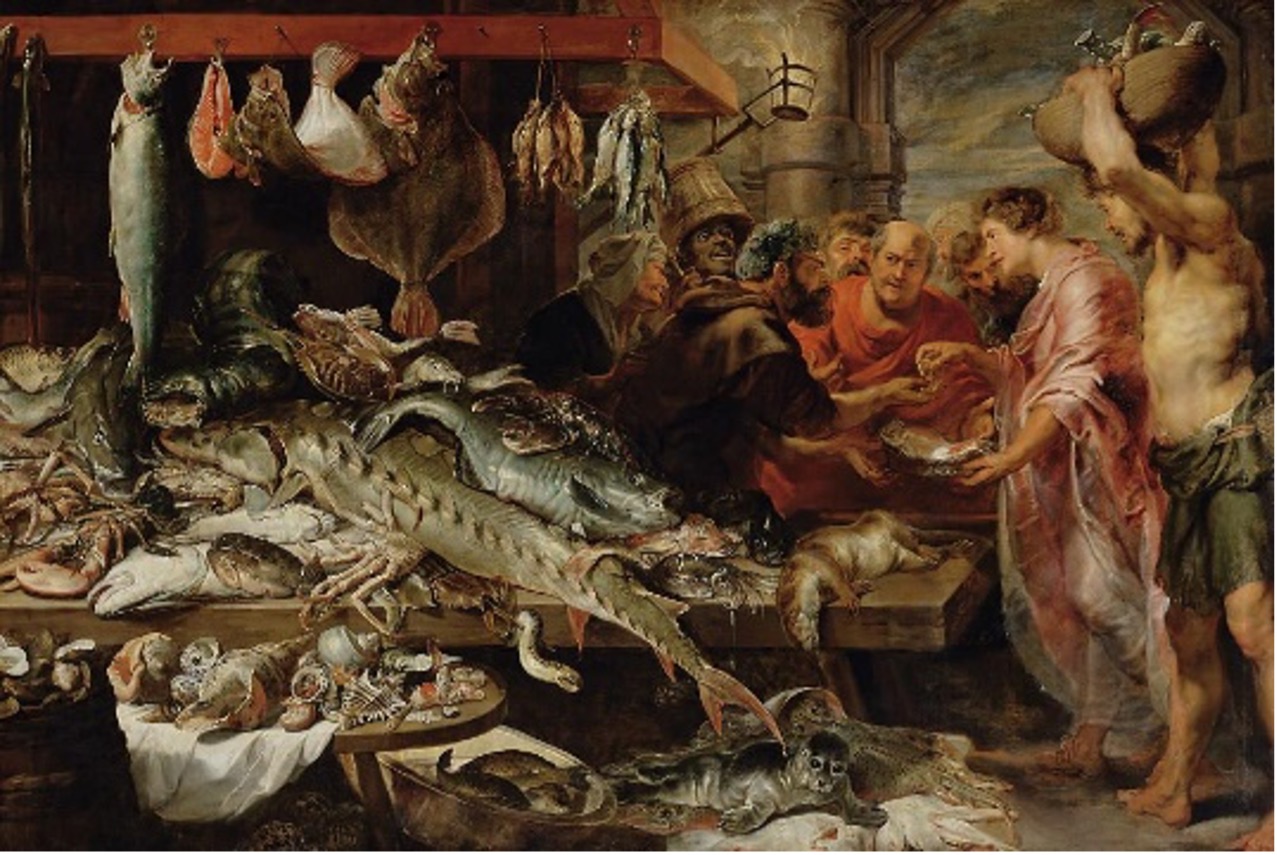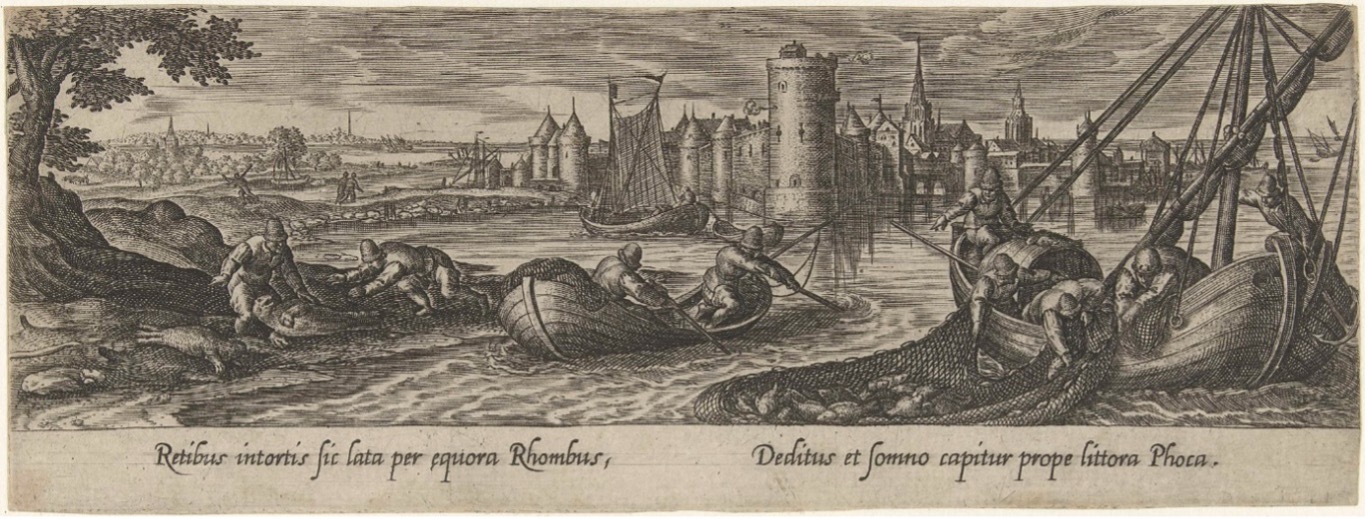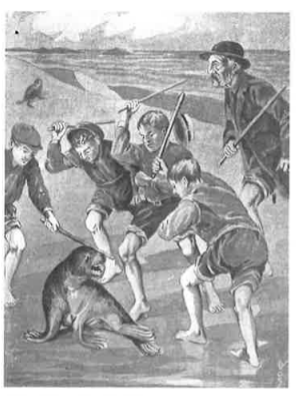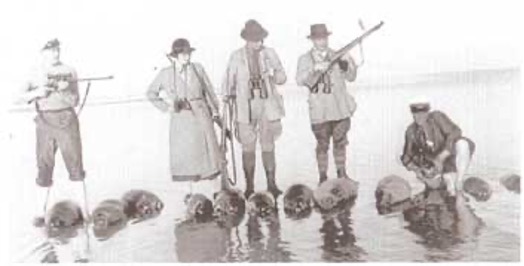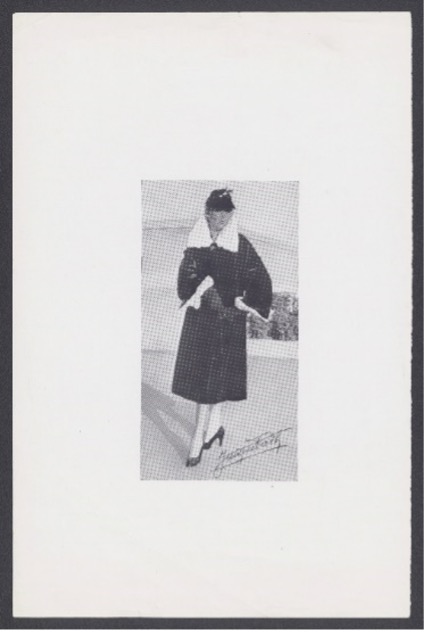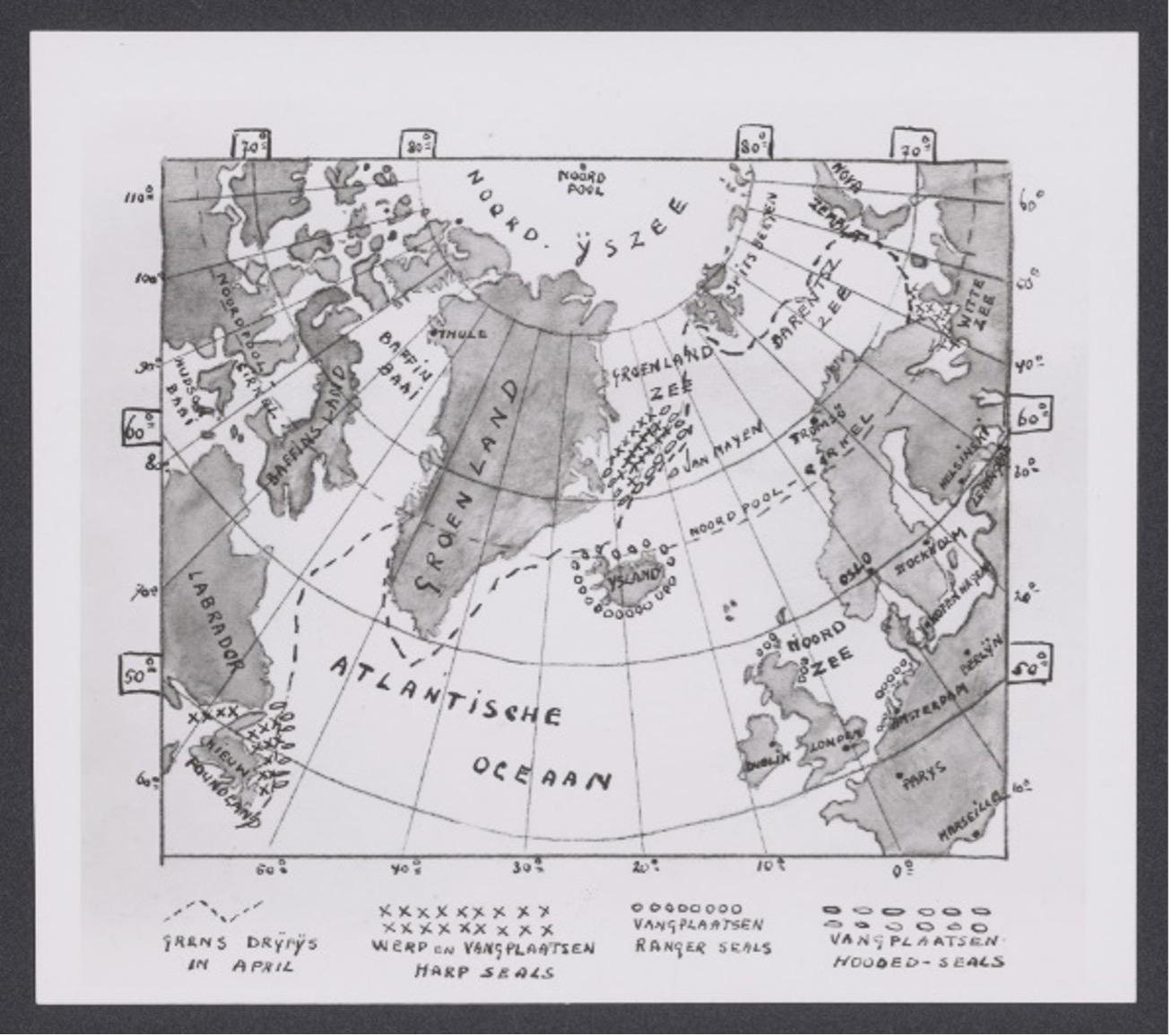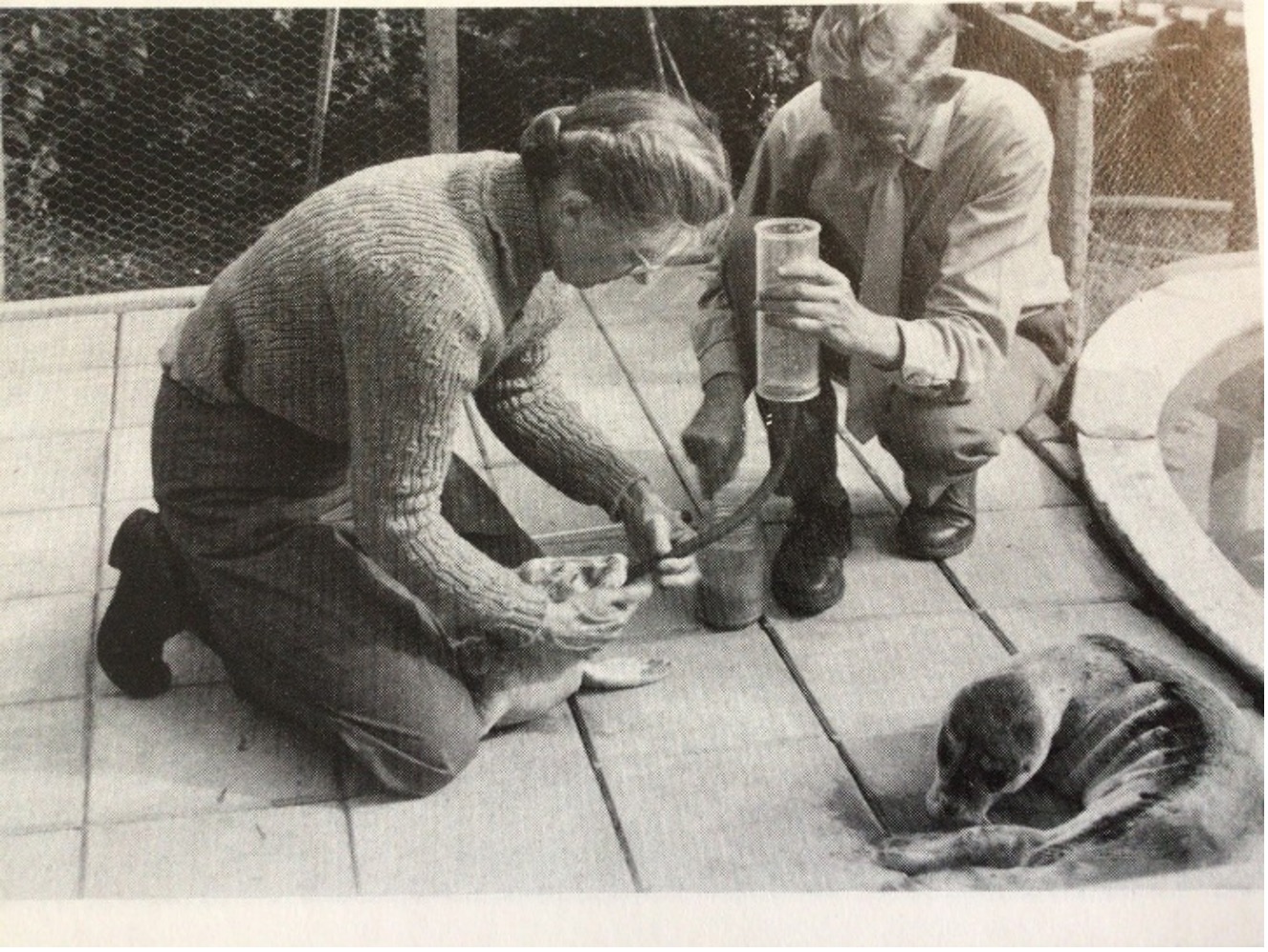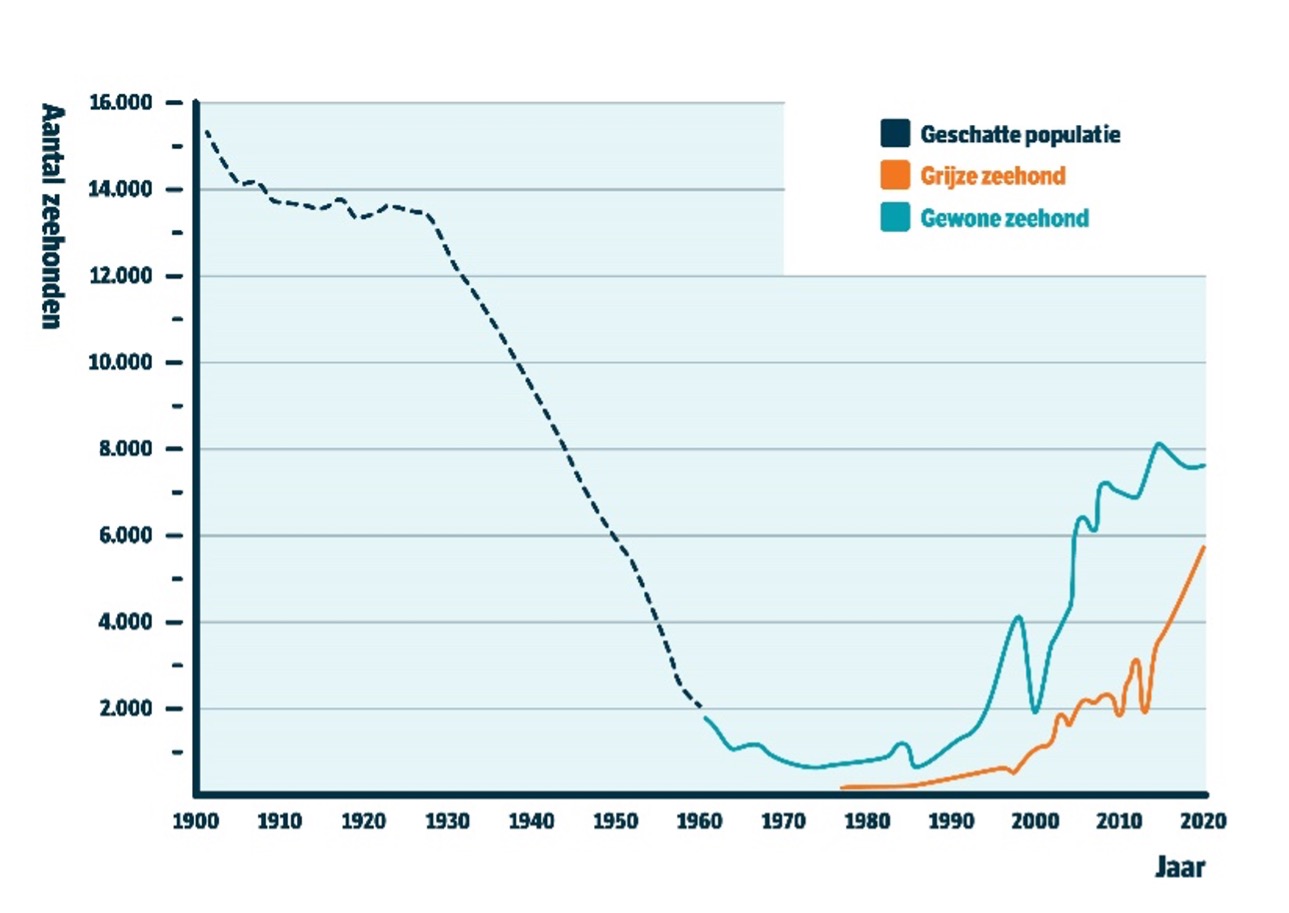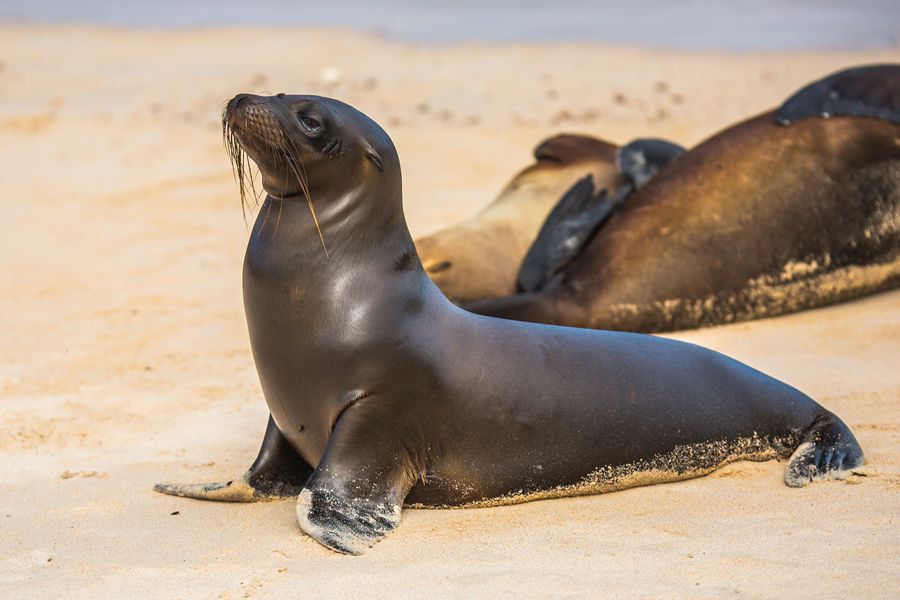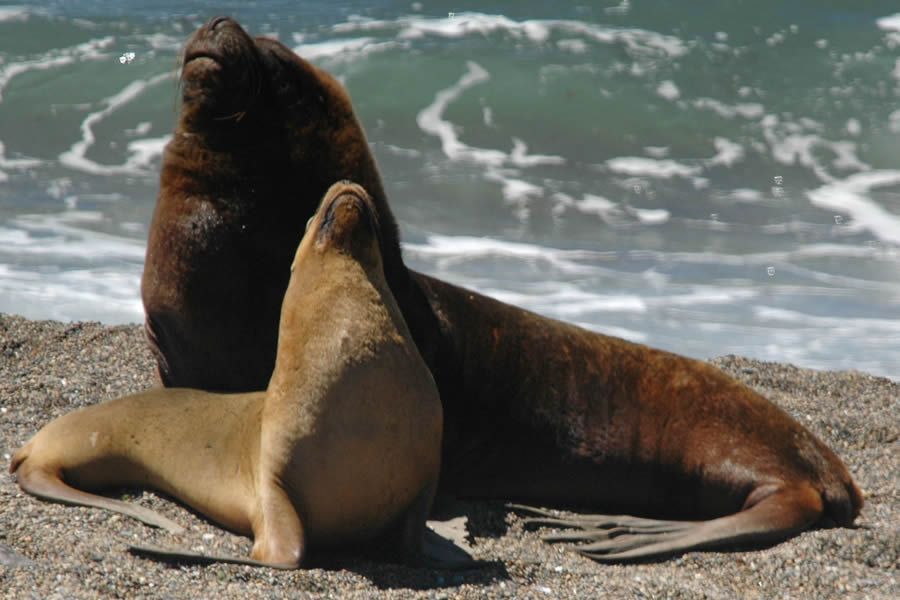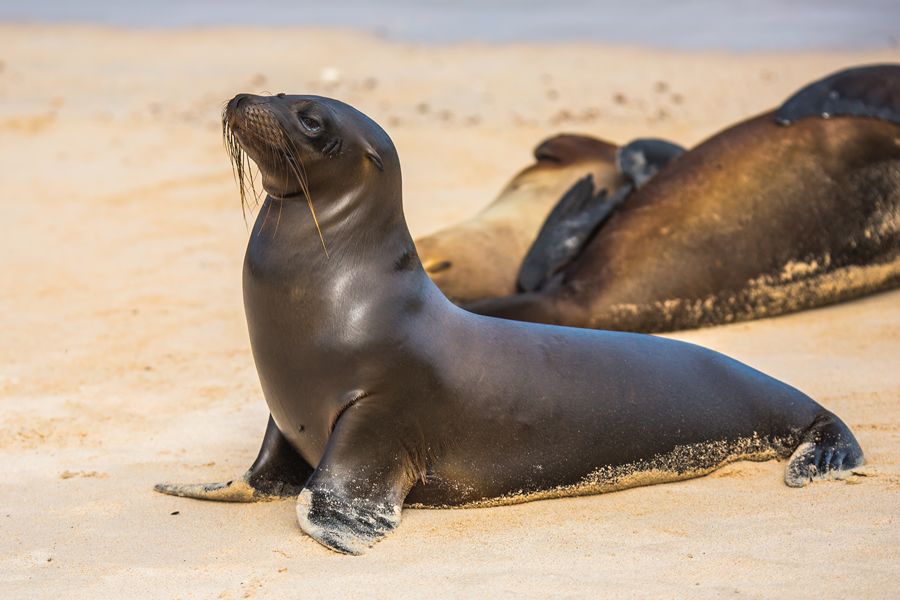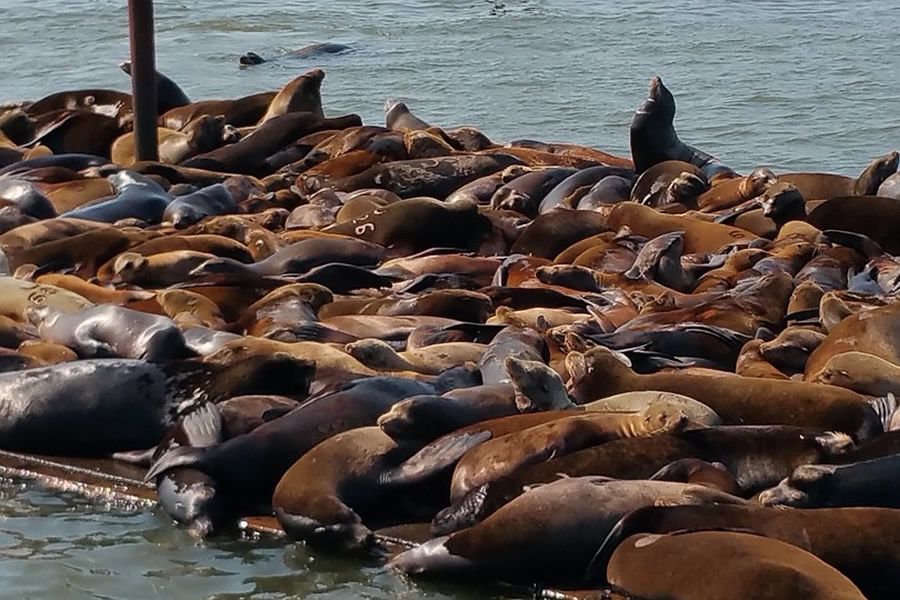Hooded seal
Scientific name: Cystophora cristata
Family: Phocidae
Size: male 3.50 meters; female 2.00 meters
Weight: male: 400 kilo; female: 300 kilo
Habitat: Northwest Atlantic Ocean and the Arctic
Endangered status: vulnerable
See also
“A male hooded seal makes tries to attract females in an extraordinary way: they have an inflatable, stretchy, red cavity in their nose (also called hood).”
External features of the hooded seal
Hooded seals can reach a weight of about 145 to 352 kilograms and a length of 2 to 2.6 metres. Large animals can even reach more than 400 kilograms. Hooded seals have a large and broad but relatively short head with large nostrils. The head and flippers are usually coloured completely black. The rest of the body is white in both males and females with black spots of all sizes and shapes1,2. In contrast to their robust body, their flippers are relatively short.
Gender differences
Imagine this: you inflate a red balloon bigger than your head. You would stand out in an audience. So does a male hooded seal, but with a hood coming from their nose! This is where the species gets its name from. They do this to attract the attention of females, but also to threaten other males (and compete when mating with females)1,6.
In fact, males have a rather large nose, the skin of which they can inflate into a black "balloon". This one can be bigger than their own head! But that's not all, as they can additionally inflate a sheet on the inside of their nose into a red "balloon". They inflate these different air sacs to show how big they are. The nose of females has no other notable modifications and they remain somewhat smaller than males.
Distribution and status
Hooded seals are found in the North Atlantic and the Arctic Ocean. They are native to Canada, Greenland, Iceland and Norway. It is estimated that there are about 600,000 hooded seals in the North Atlantic and another 100,000 or so in the Arctic Ocean. The hooded can swim in water from -1.9°C to 10.7°C9.
Did you know...
The habitat of the hooded seal is decreasing due to climate change?
Decreasing habitat
This gives? the hooded seal the "vulnerable" status on the IUCN Red List, meaning that the species may be endangered in the future2,3The habitat of the hooded seal, like other Arctic or ice dependent species, is threatened by habitat loss - due to climate change. Therefore, it could be the case that the hooded seal will be listed as an "endangered" species2. Because of its vulnerable status, the hooded seal is protected by the Marine Mammal Protection Act1.
Humans hunting hooded seals
In the past, there was intensive and unsustainable commercial hunting of hooded seal mothers for oil and leather or the pups' fur. Usually, when pups were hunted for their fur, the mothers were also killed because they would try to defend their pup. In Greenland today, people still hunt hooded seals for meat or fur1,2,5,8.
Further threats to the hooded seal population include entanglement or bycatch, competition for food with commercial fisheries or other predators, climate change and, as usual, typical diseases1,2.
Diet and foraging
The diet of hooded seals consists mainly of squid, starfish, mussels and some fish species such as Arctic and Atlantic cod and herring. Young hooded seals eat pelagic crustaceans, such as krill
Did you know...
Hooded seals can dive as deep as 1 kilometre?
While foraging, hooded seals dive as deep as 100 to 600 metres. They then do so for about 13 to 15 minutes. However, it is known that they can even reach a depth of 1,000 metres! Hooded seals can stay underwater for 1 hour and can travel as fast as 27 kilometres per hour 1,2,7.
Behavior of the hooded seals
Hooded seals are solitary animals. That means they prefer to go their own way. In general, hooded seals show aggressive and territorial behaviour. Males are known to patrol along the ice edge and often stay close to females. There is considerable fighting between males, with often bloody results, whilst showing off vocally their inflated red 'hood'1,5.
The only social contact with other hooded males occurs during the mating and moulting season 1,10. The males then appear together in small groups. But: even then they will avoid lying close together2.
Did you know...
Hooded seals can stay at sea for weeks without resting?
The hooded seal is a migratory species: they migrate. Sometimes they spend weeks at sea without resting. When they do rest, they prefer to do so on floating pack ice 6,8. Their annual migration cycle begins when they are sexually mature1. Males are sexually mature at 6 years of age, females at 3 to 6 years of age7. The molting period is annual in July, after the young are born 1,2.
Voortplanting bij de klapmuts
From April to June, the hooded seals have only 2.5 weeks to mate6. Hooded seals are polygamous: males mate with several females. Mating takes place under water2,4.
Diapause and pregnancy
As with all seal species, there is a diapause after fertilization. A diapause means that there is a time between fertilization and the actual pregnancy, so implantation is delayed. This delayed implantation of the fertilized egg takes about 3 to 4 months. After these months, gestation lasts about 8 to 11 months7,8.
Birth and nursing period
A hooded seal gives birth to one single pup. The pup is born and suckled on the sea ice1,2. The mother will aggressively defend her pup. Usually, the mother will not forage while lactating. Usually, a male will assist the mother and her pup and stay nearby. When the mother will suckle her pup, the male can mate with her directly in the water5,8.
The birthing season usually takes place around March and April5. The pups are also known as "bluebacks" because their fur appears blue-grey. Unlike their backs, the pups have a whitish belly. The fur falls out during the molt when they are 14 months old1.
Did you know...
Pups of hooded seals have the shortest lactation time of all mammals? Suckling lasts only 3-5 days after birth.
Suckling lasts only three to five days after birth. This makes the pup of the hooded seal the fastest suckling mammal compared to other mammals. During the suckling period, the pup drinks up to 10 litres of the high-fat content milk per day1,8.
At birth, the pup weighs around 24 kilograms and is about 1 metre long1,2. After the suckling period, the pup will weigh about 48 kilograms. In other words, within five days, the pup doubles its weight (and gains about 7 kilograms a day)2,11. The pup first stays in the ‘nursing area’ for a while, but then starts learning to swim, dive and forage independently8. They do this based on their instincts.
Natural enemies of the hooded seal
Hooded seals are on the menu of polar bears. Killer whales could also be possible predators of the hooded seal, but this has not yet been observed. Greenland sharks can feed on young hooded seals2,11.
1. ( Hooded Seal; NOAA Fisheries; 2022)
https://www.fisheries.noaa.gov/species/hooded-seal
2. (Hooded Seal; IUCN RedList; 2015)
https://www.iucnredlist.org/species/6204/45225150
3. (Vulnerable species; dictionary; 2012)
https://www.dictionary.com/browse/vulnerable
4. (Polygyn, dictionary; 2012)
https://www.dictionary.com/browse/polygyny
5. (Hooded Seal;Marine Species Identification Portal; n.d.)
http://species-identification.org/species.php?species_group=marine_mammals&menuentry=soorten&id=49&tab=beschrijving
6. (Hooded Seal; Discovery of the Sound in the Sea; n.d.)
https://dosits.org/galleries/audio-gallery/marine-mammals/pinnipeds/hooded-seal/?vimeography_gallery=115&vimeography_video=653017743
7. (Hooded Seal; Oceanwide; n.d.)
https://oceanwide-expeditions.com/to-do/wildlife/hooded-seal
8. (Hooded Seal: Cystophora cristata; 2009)
https://www.sciencedirect.com/science/article/pii/B9780123735539001322
9. (Hooded seal Cystophora cristata foraging areas in the Northeast Atlantic Ocean-Investigated using three complementary methods; 2017)
https://journals.plos.org/plosone/article?id=10.1371/journal.pone.0187889
10. (Cystophora cristata hooded seal; Animal Diversity Web; 2010)
https://animaldiversity.org/site/accounts/information/Cystophora_cristata.html
11. (Hooded Seal; Norwegian Polar Institute; n.d.)
https://www.npolar.no/en/species/hooded-seal/
12. Thomas A. Jefferson, Marc A. Webber and Robert L. Pitman, in Marine Mammals of the World (Second Edition), 2015
Authors:
Vivien Burmann
On this page
-
Features hooded seal
-
Distribution and status
-
Diet and foraging
-
Behaviour hooded seal
-
Reproduction hooded seal
